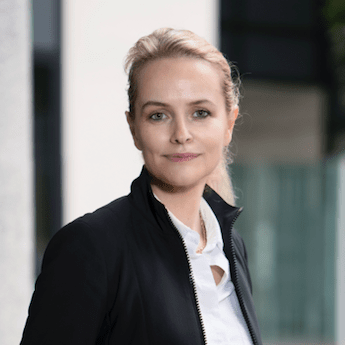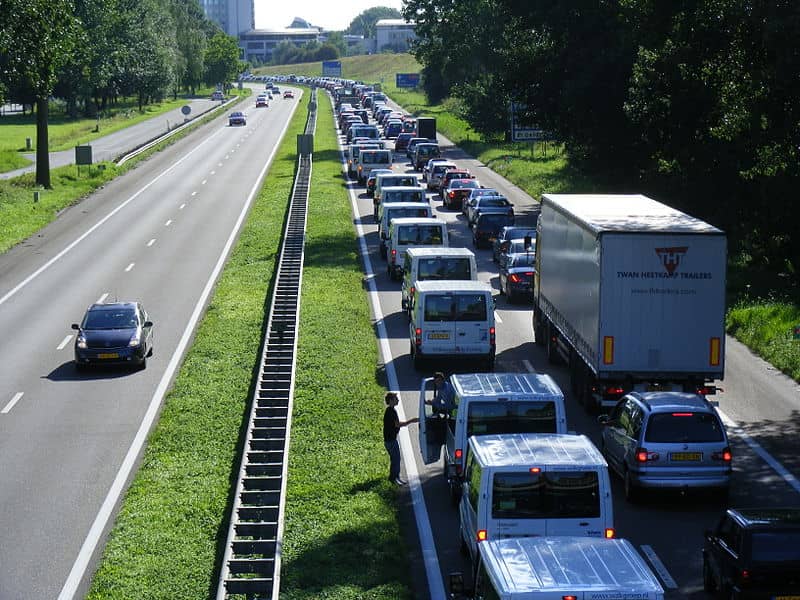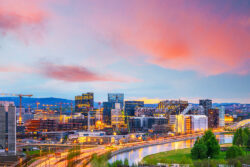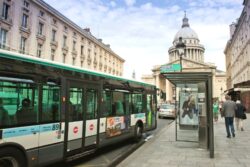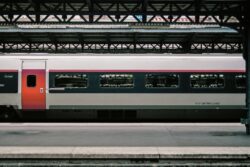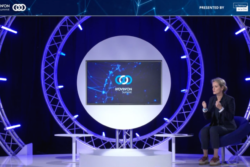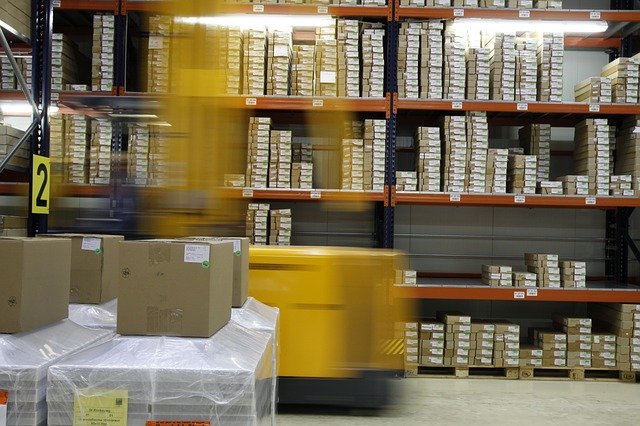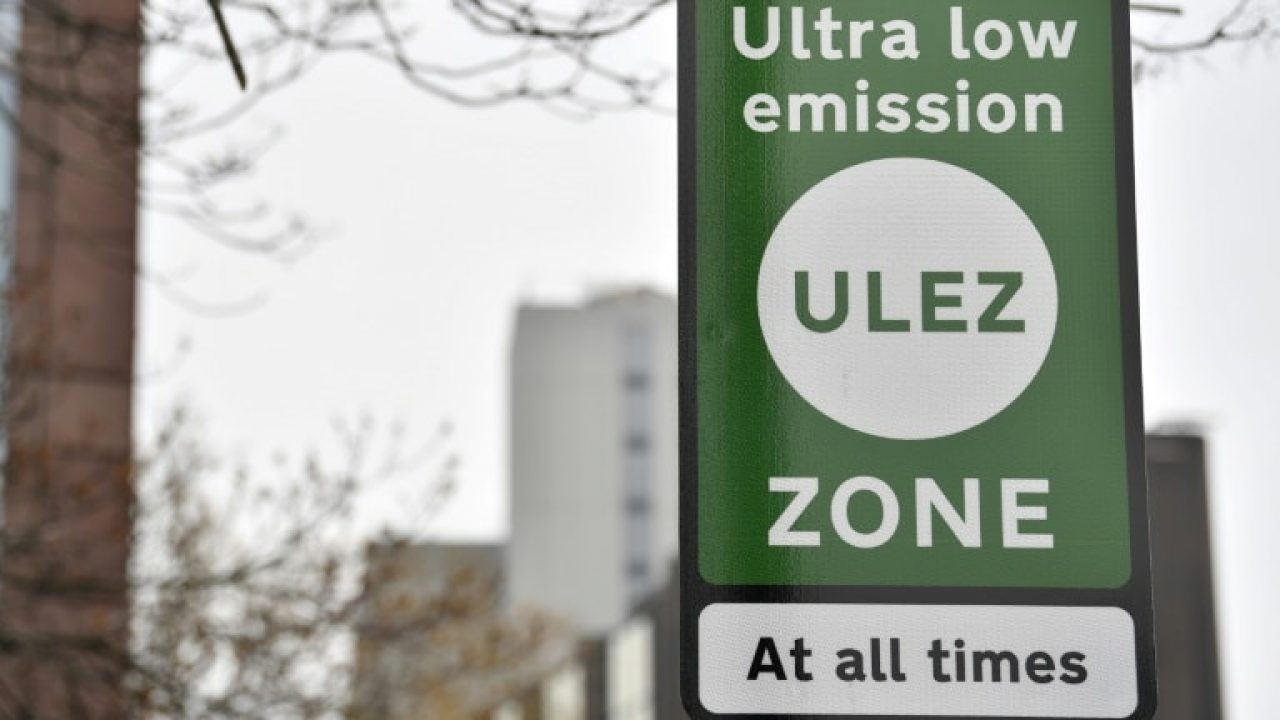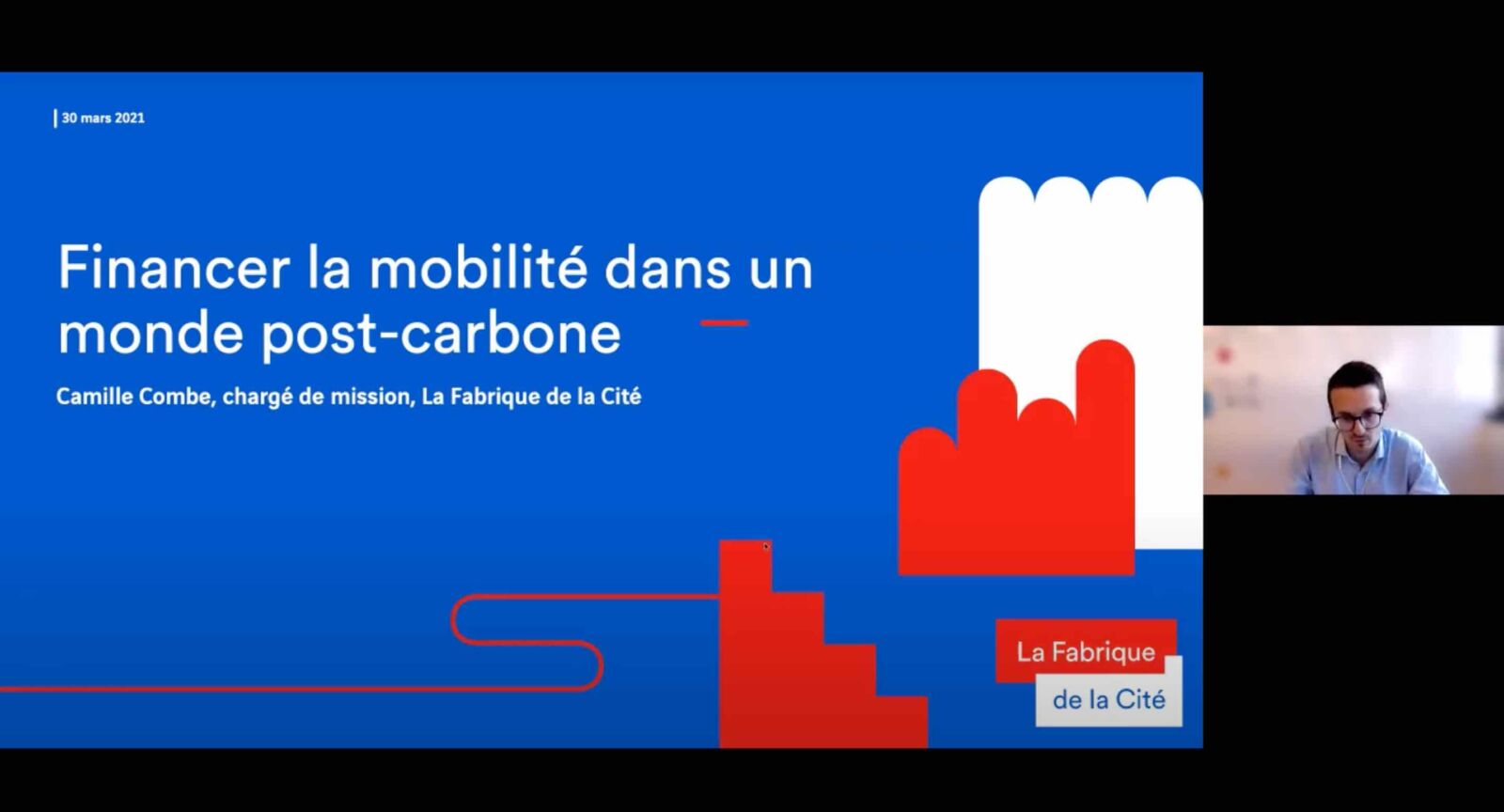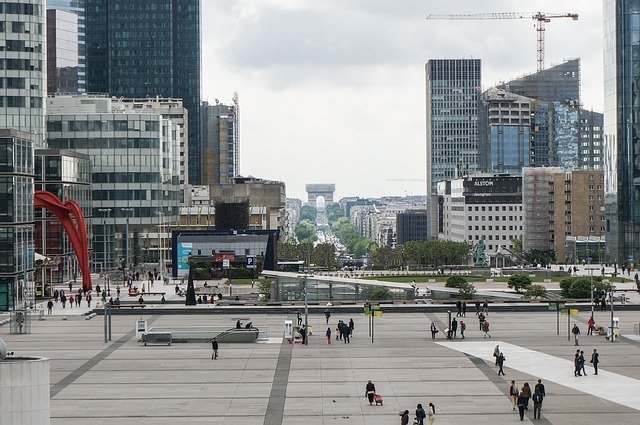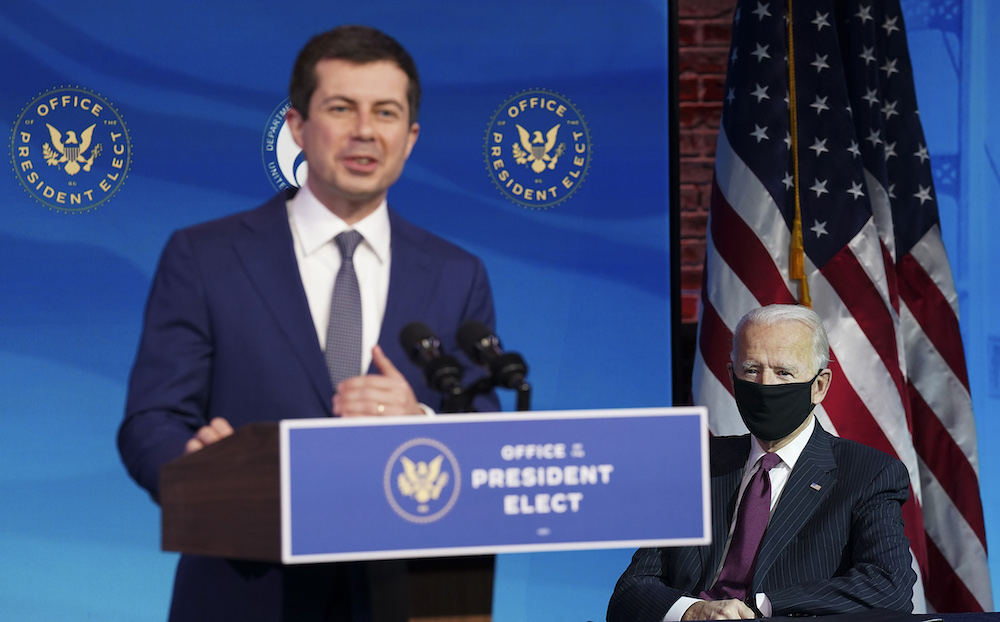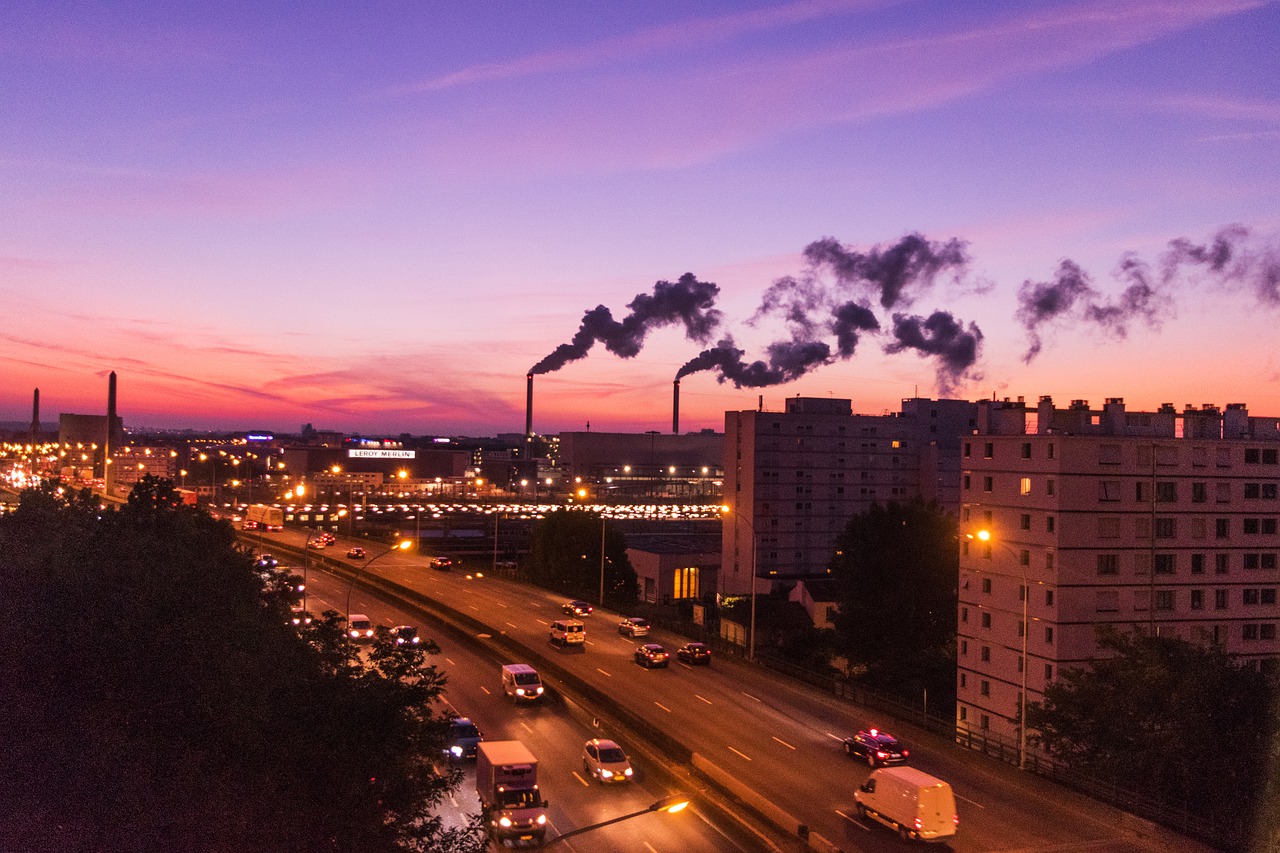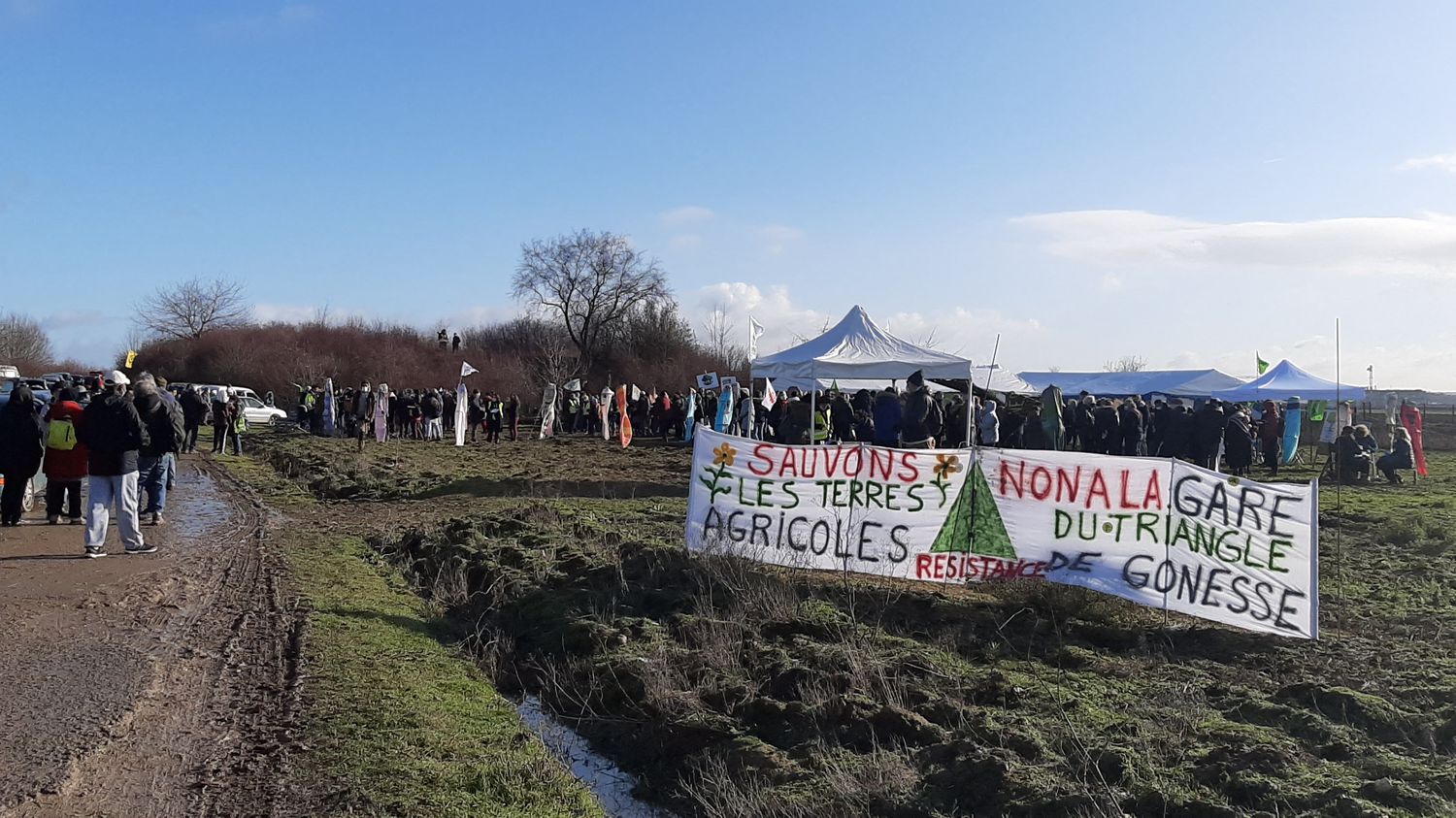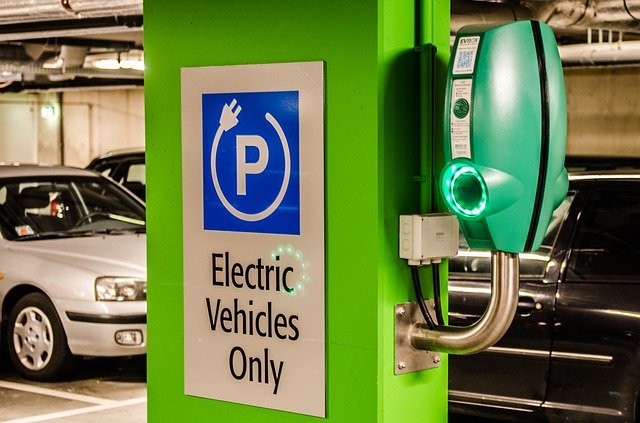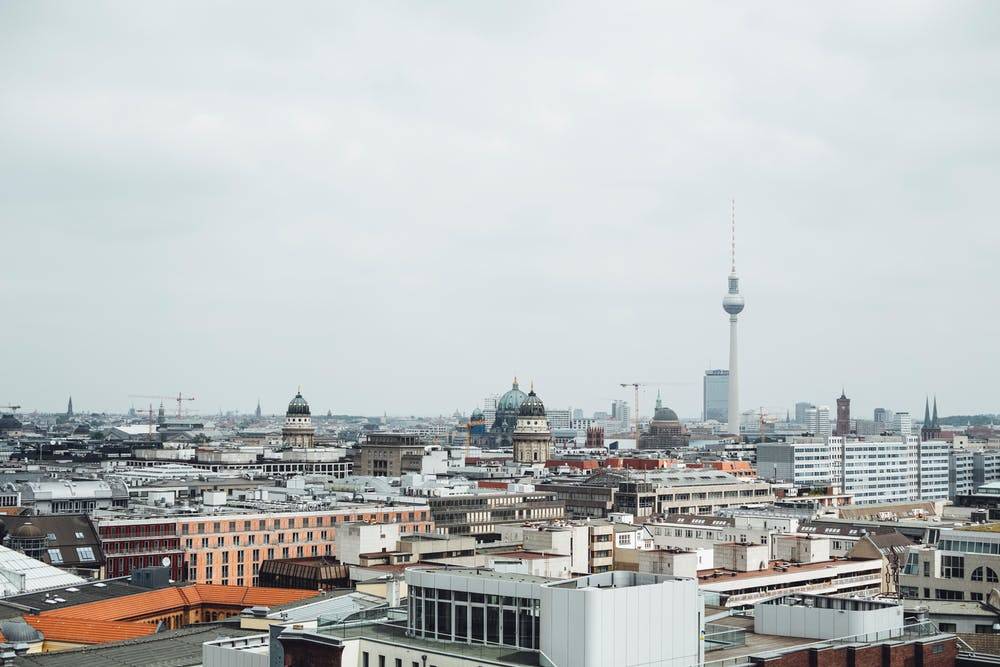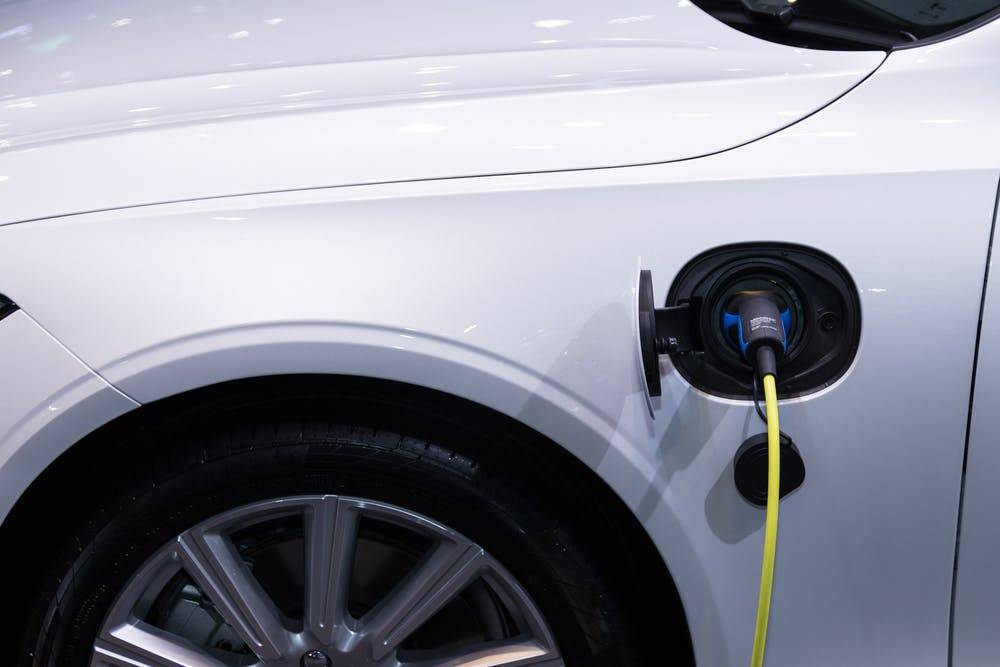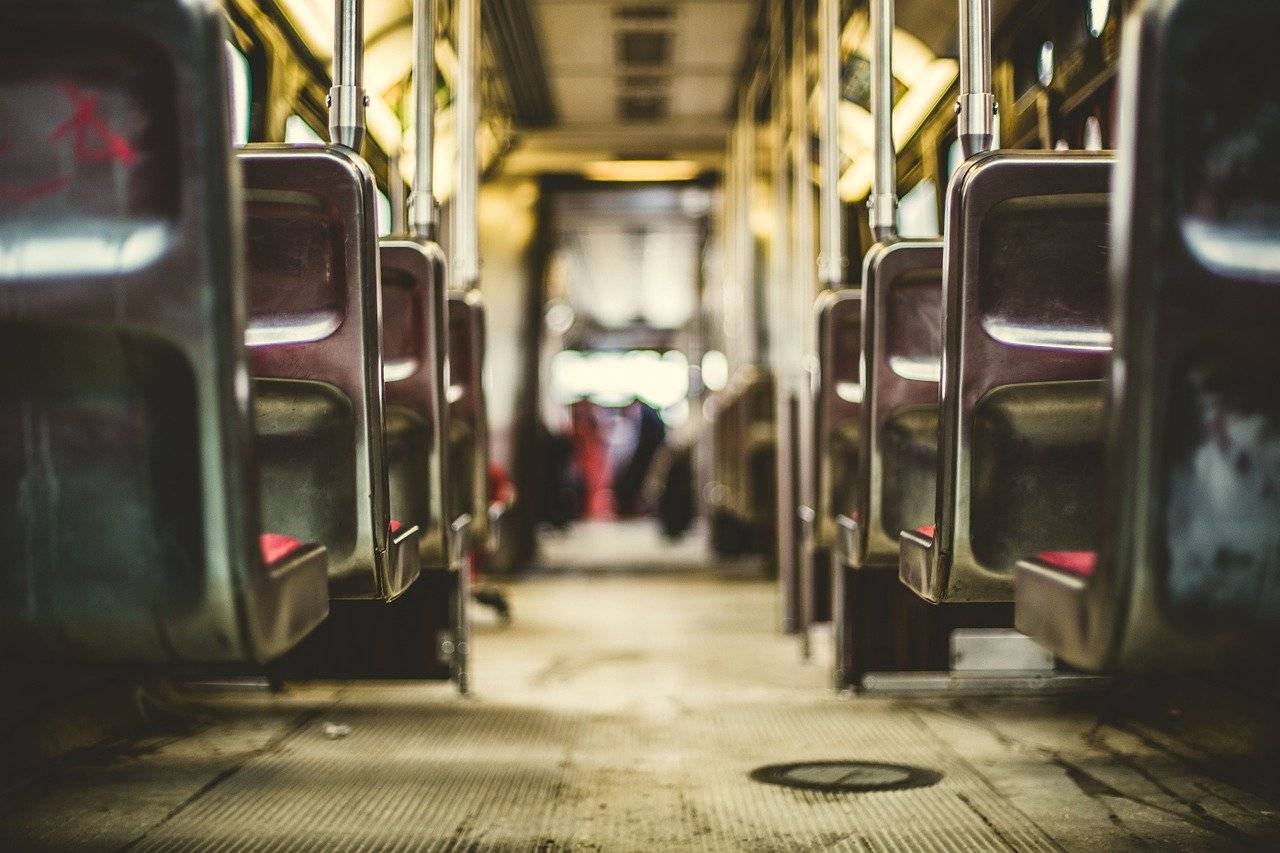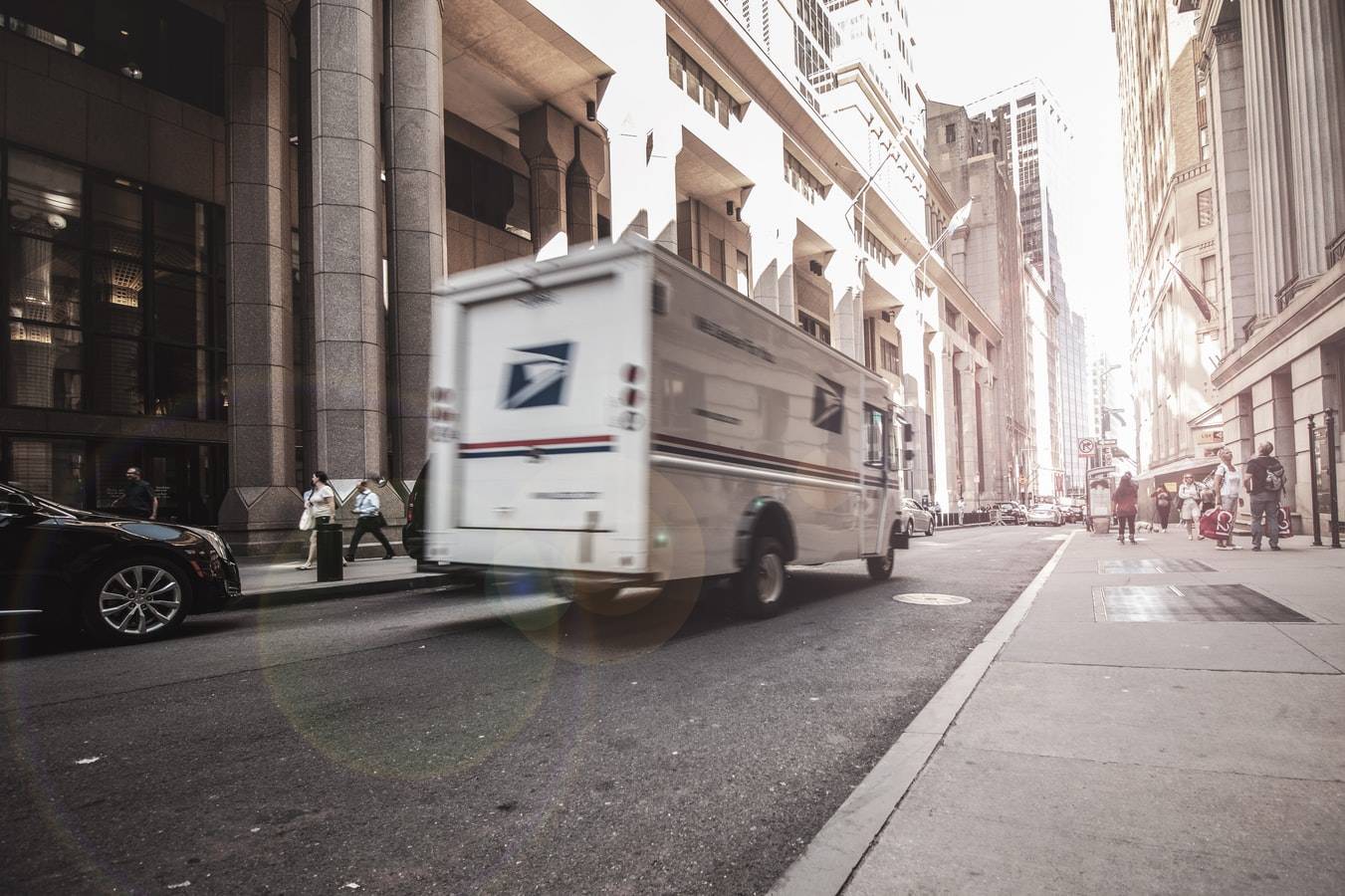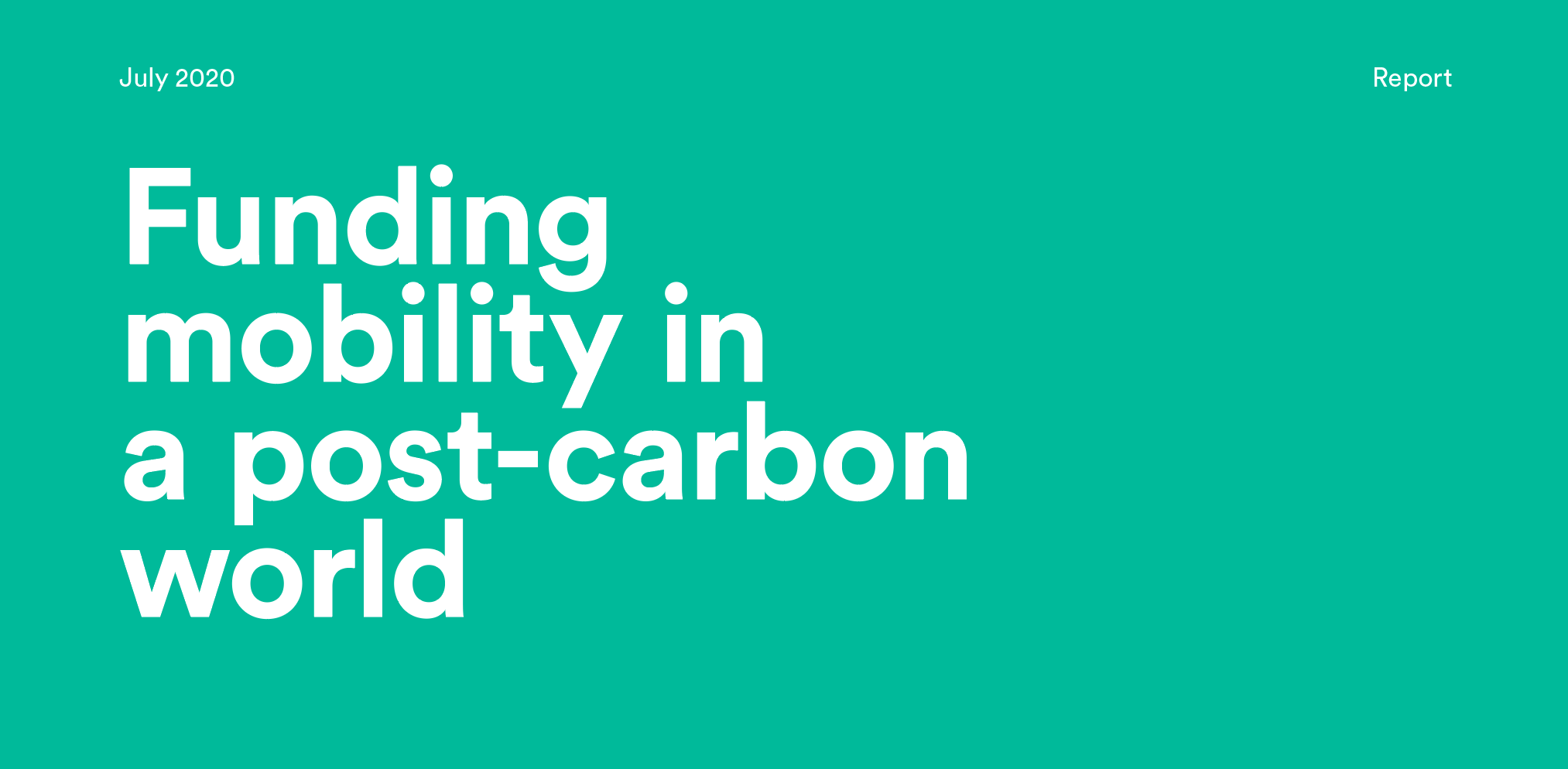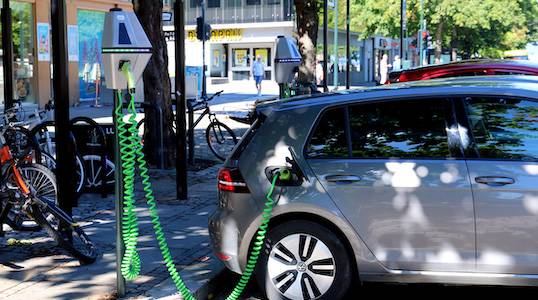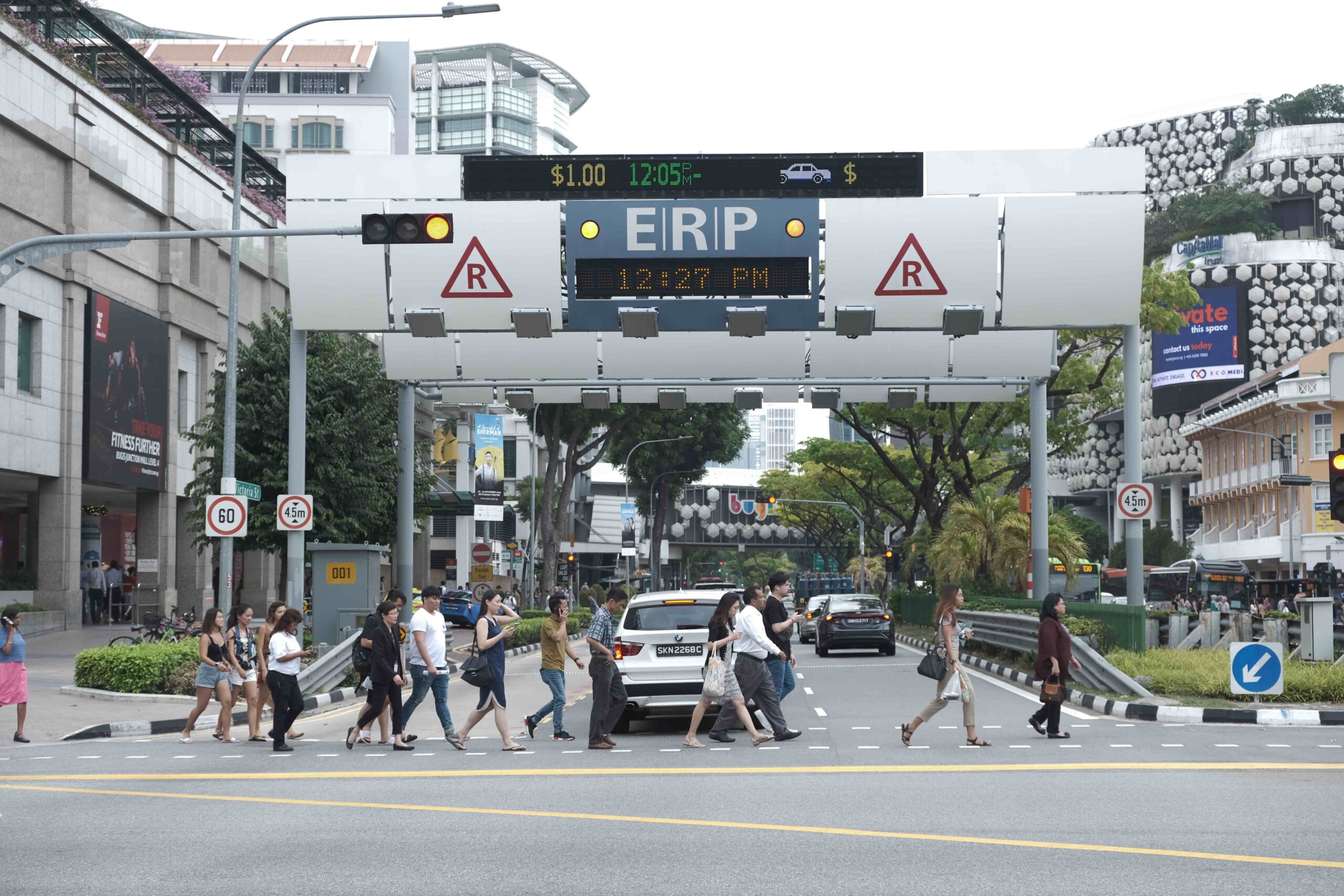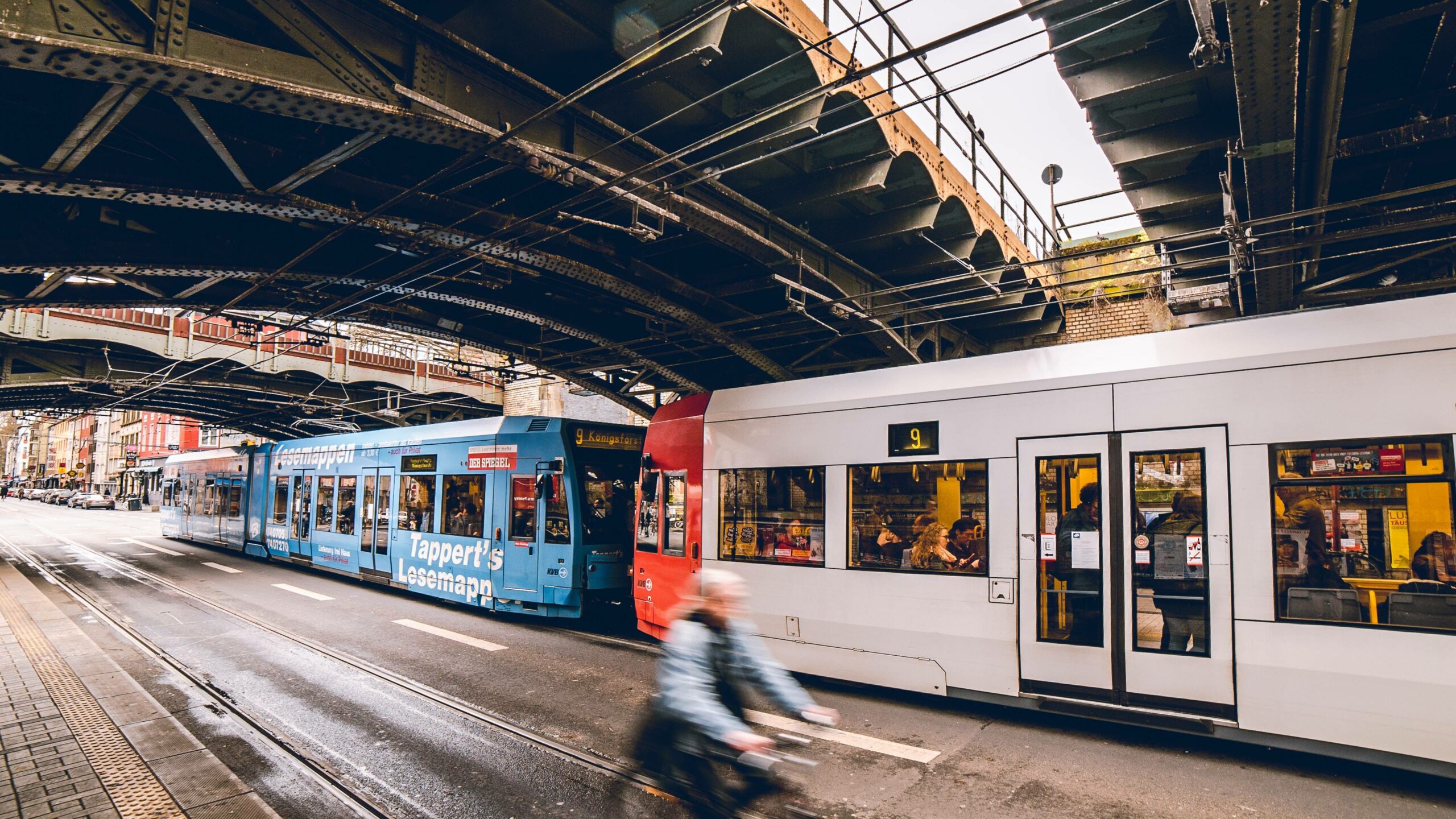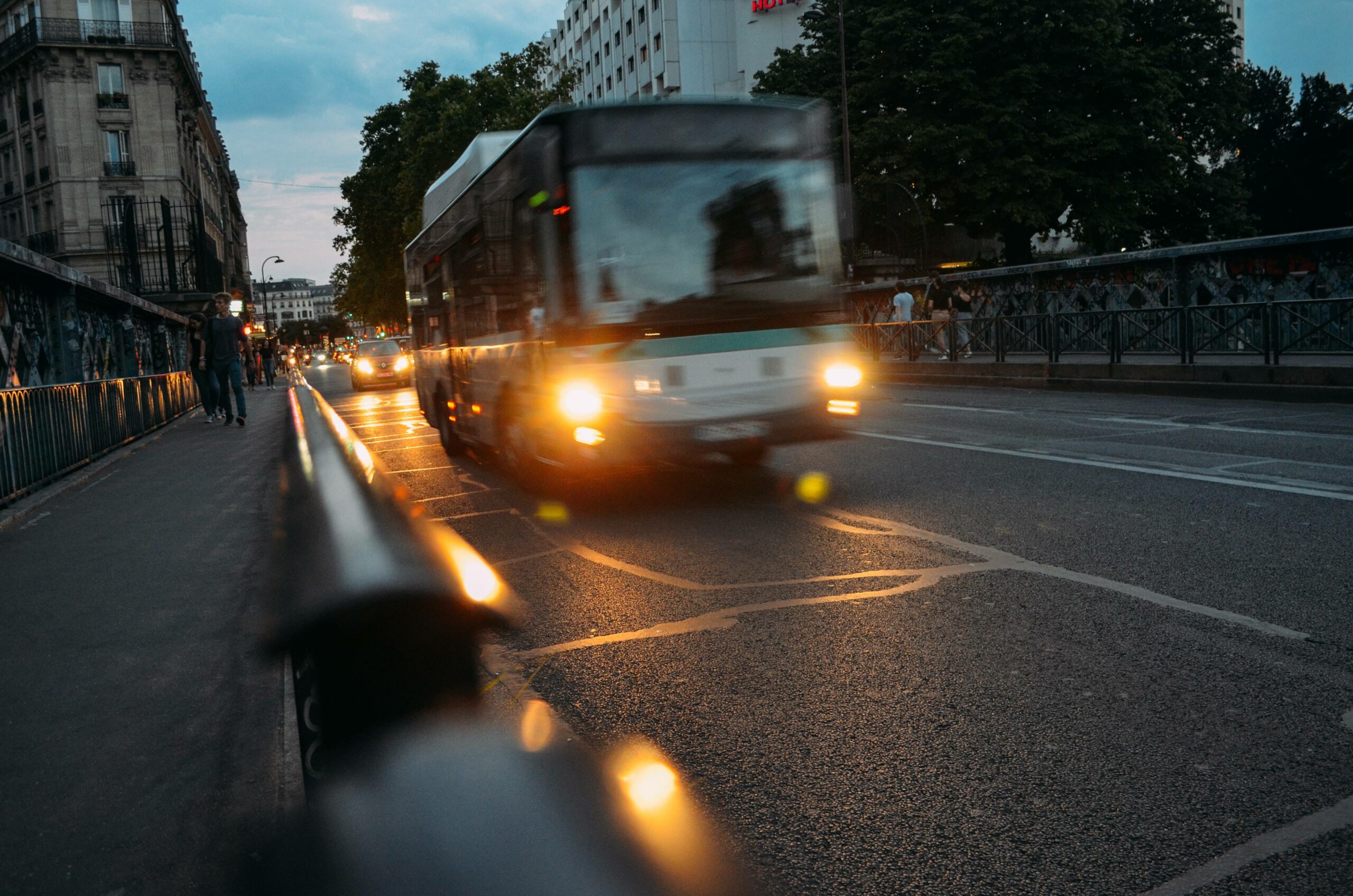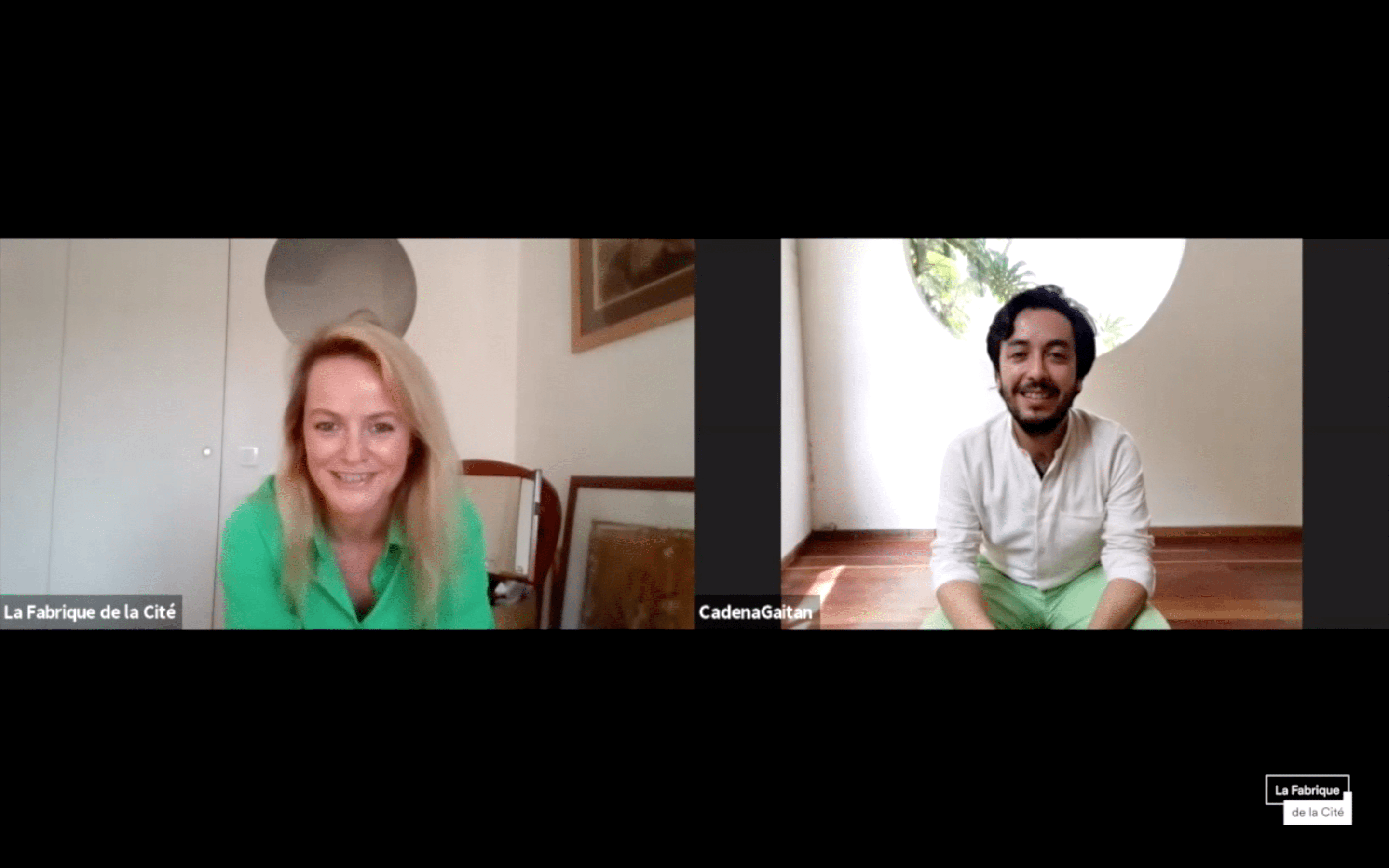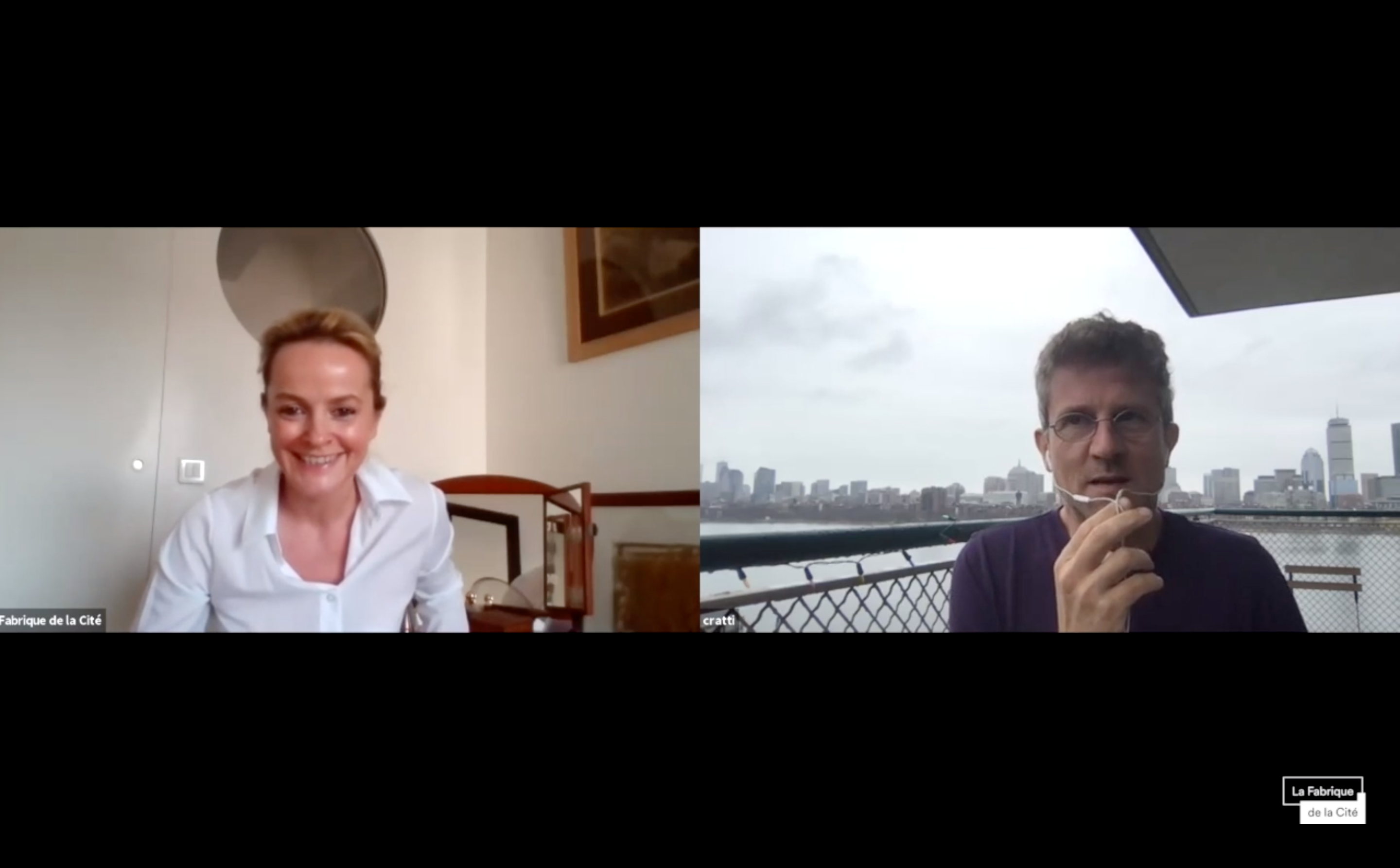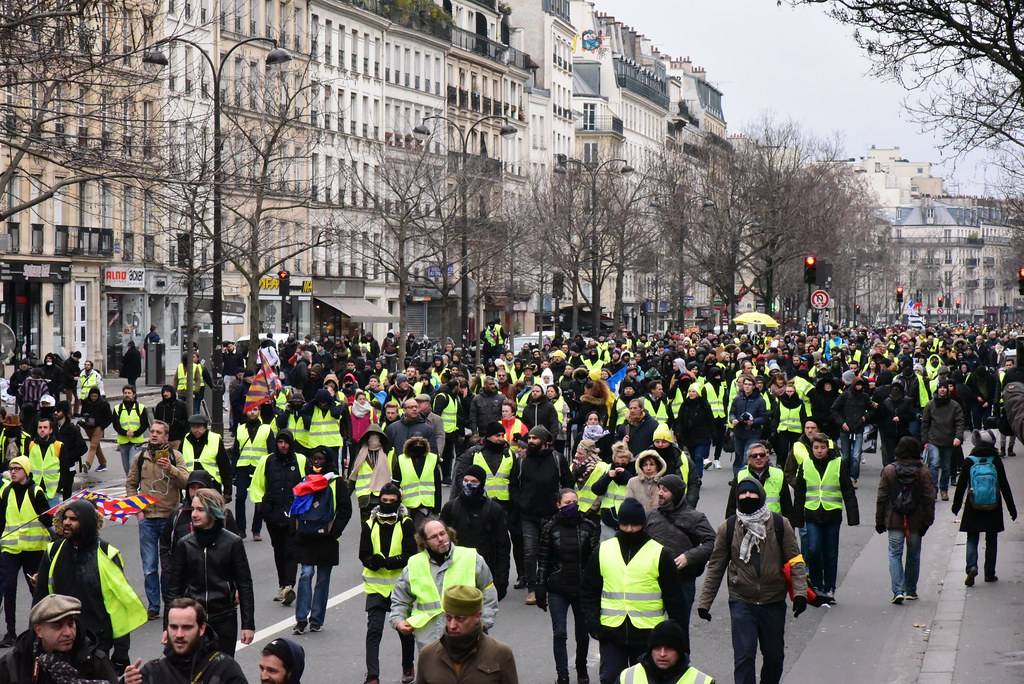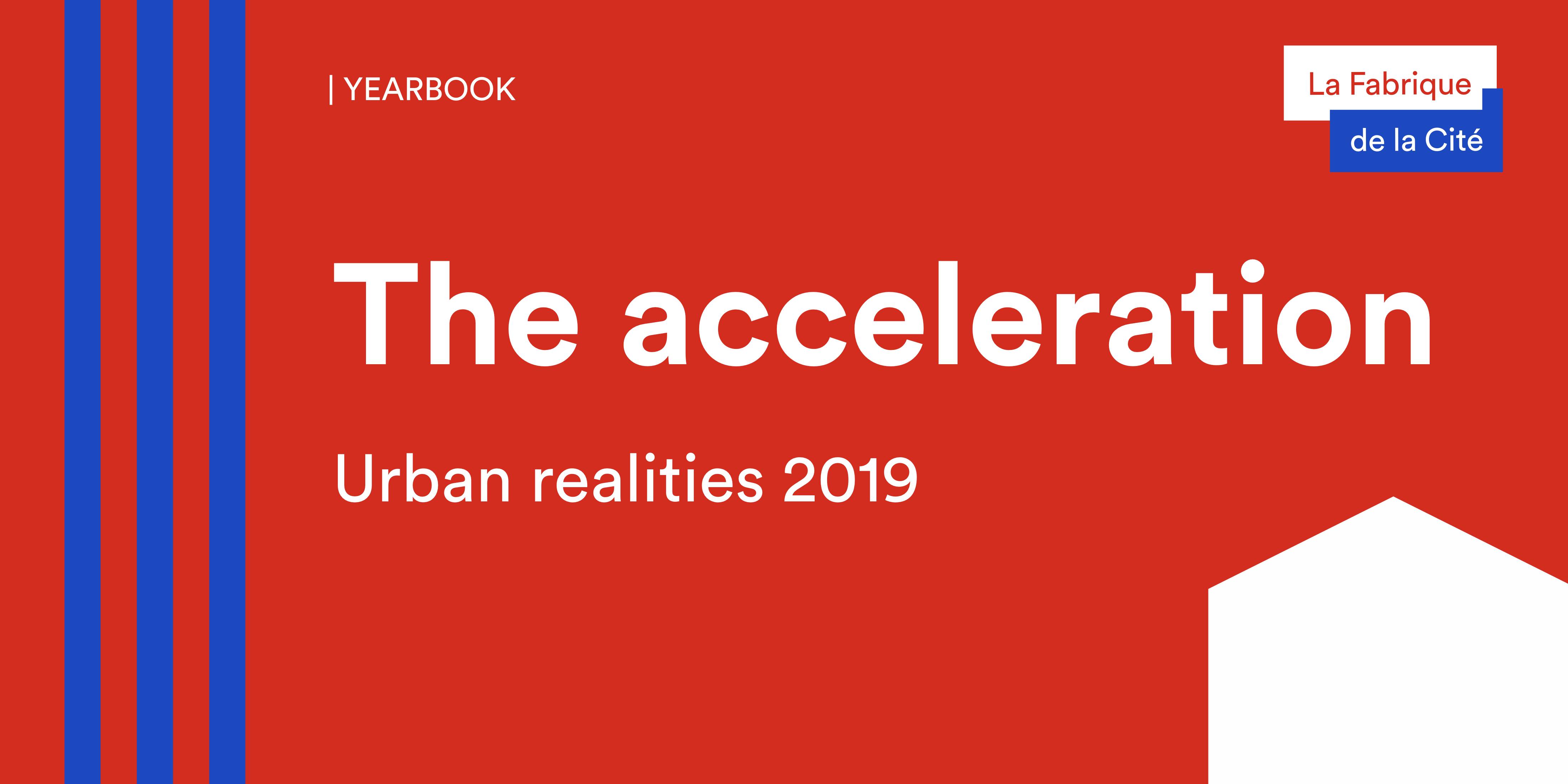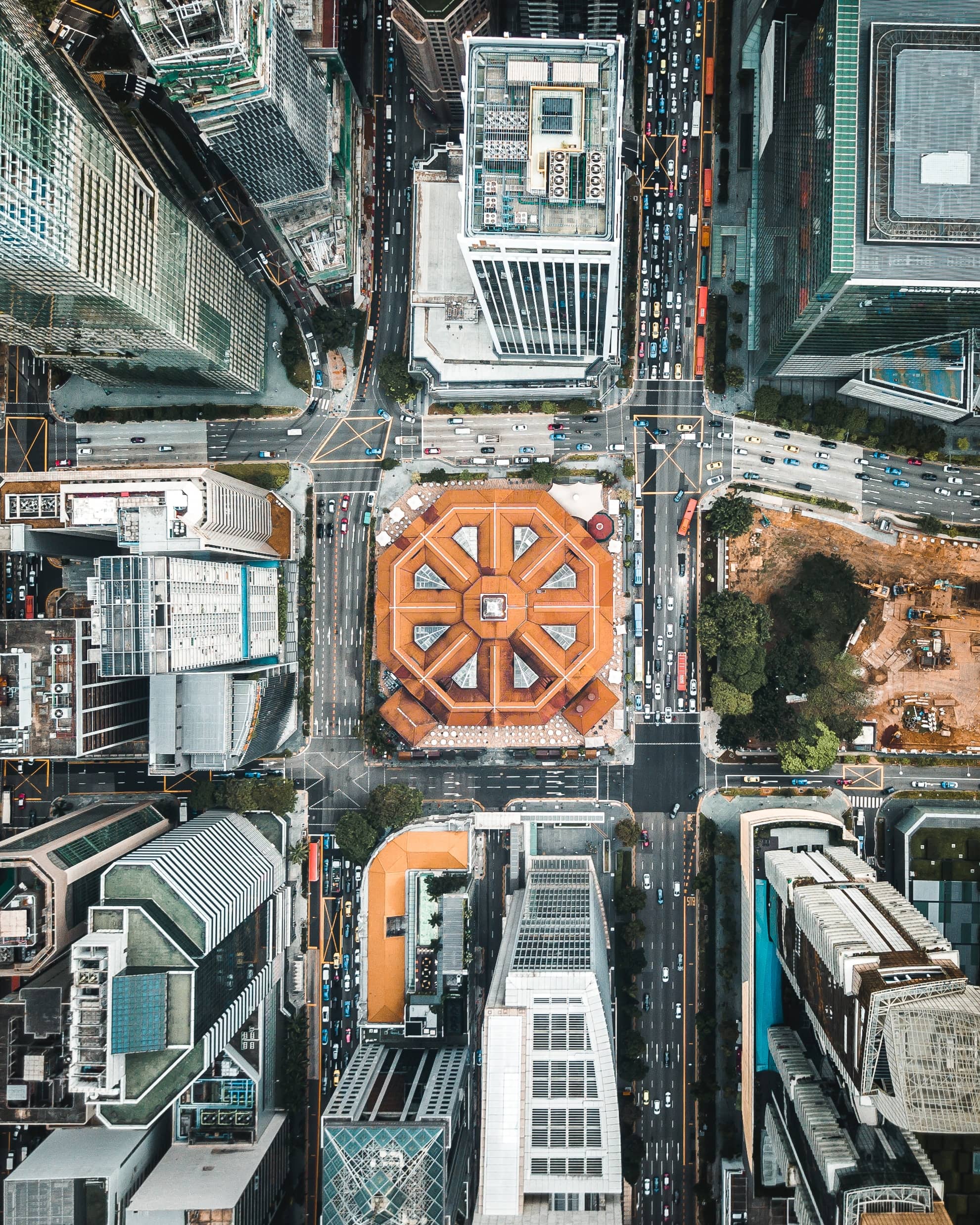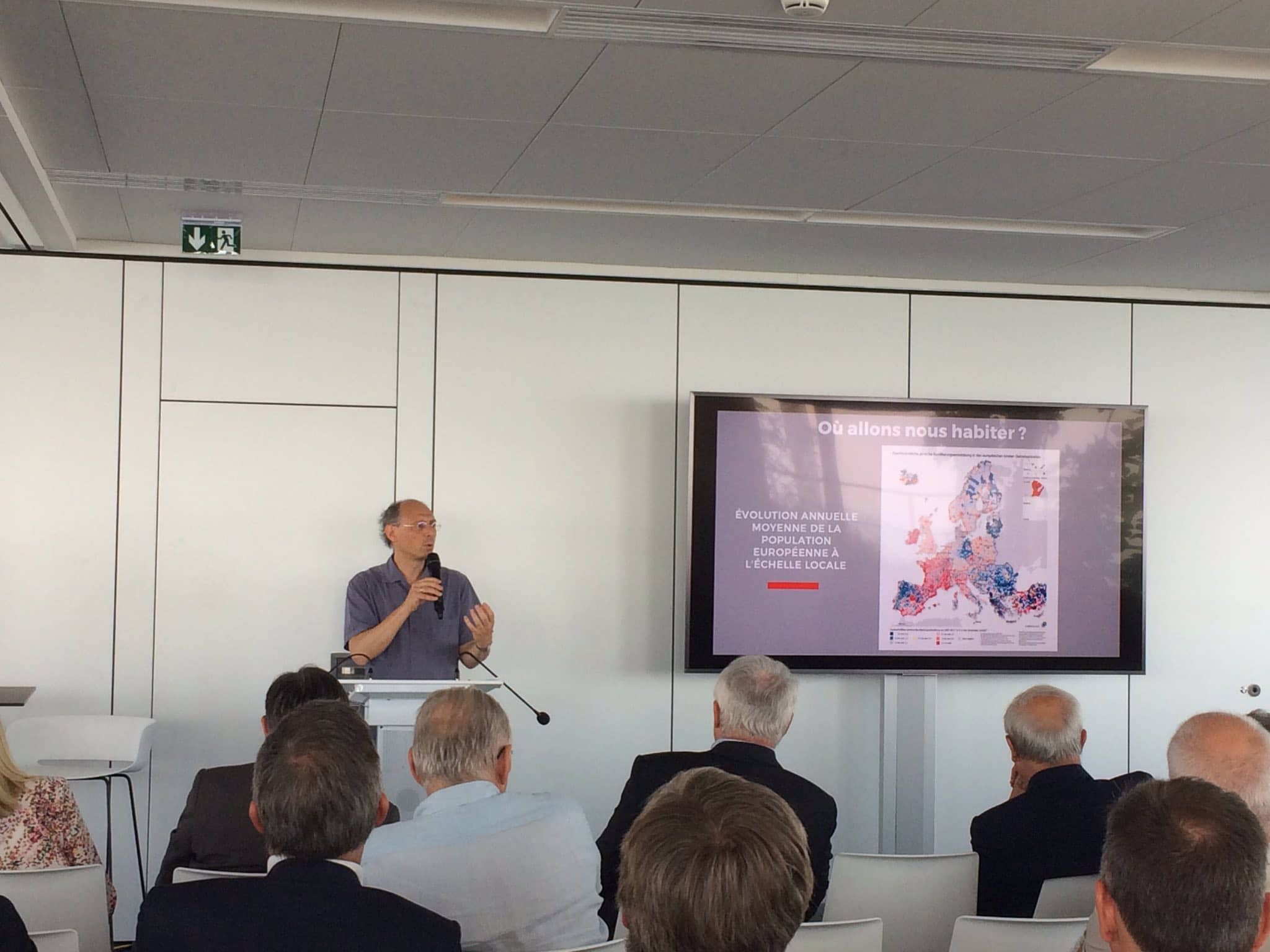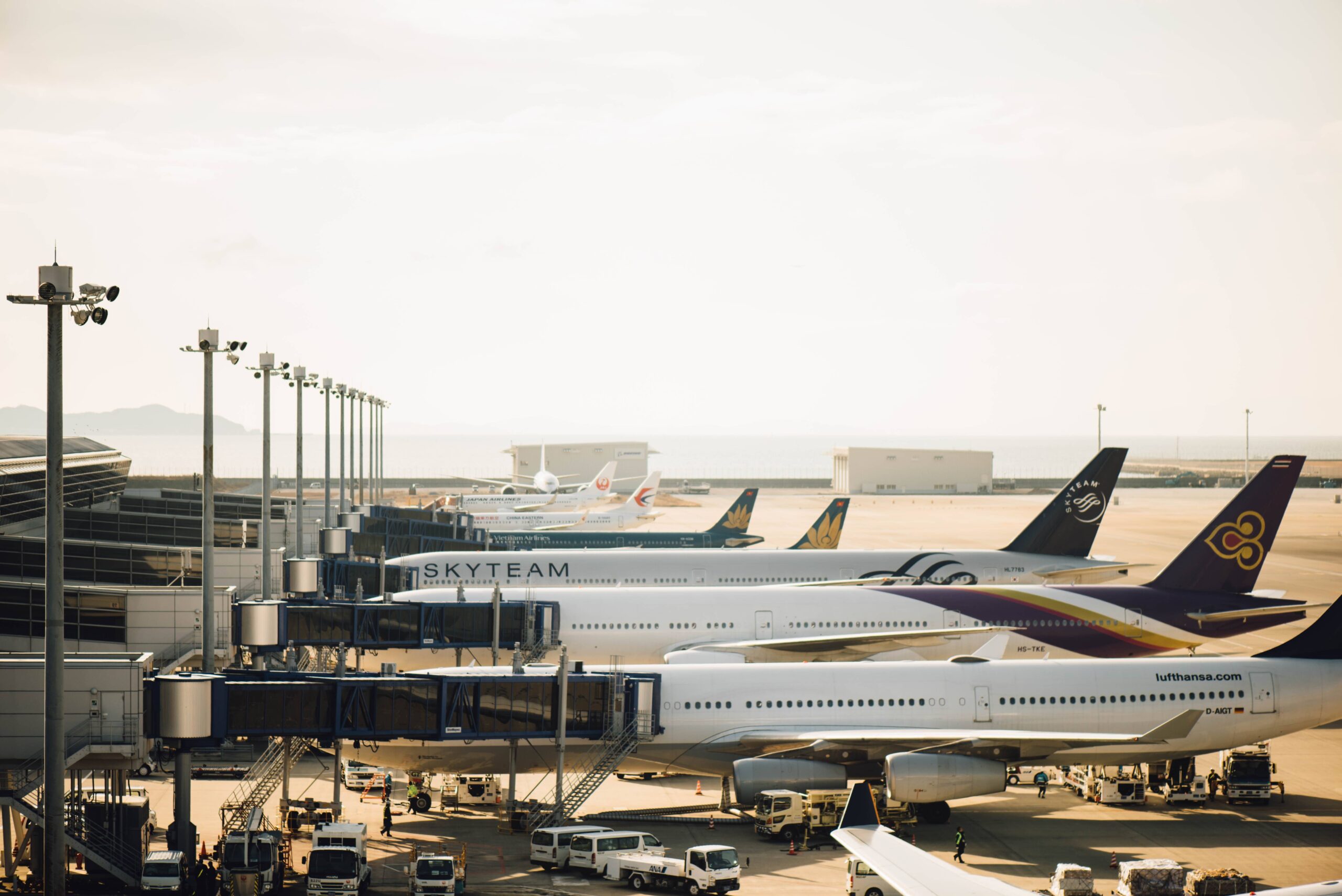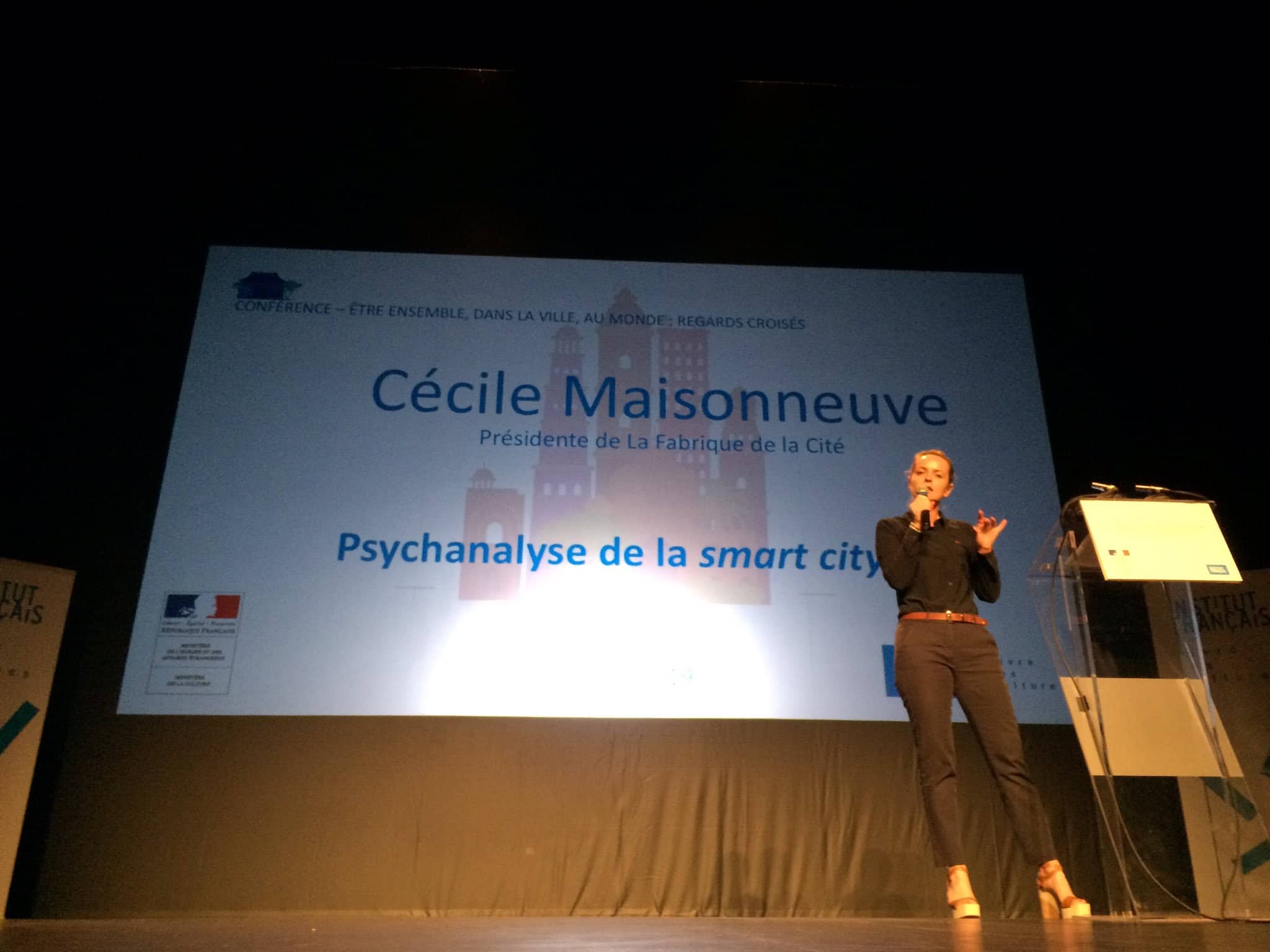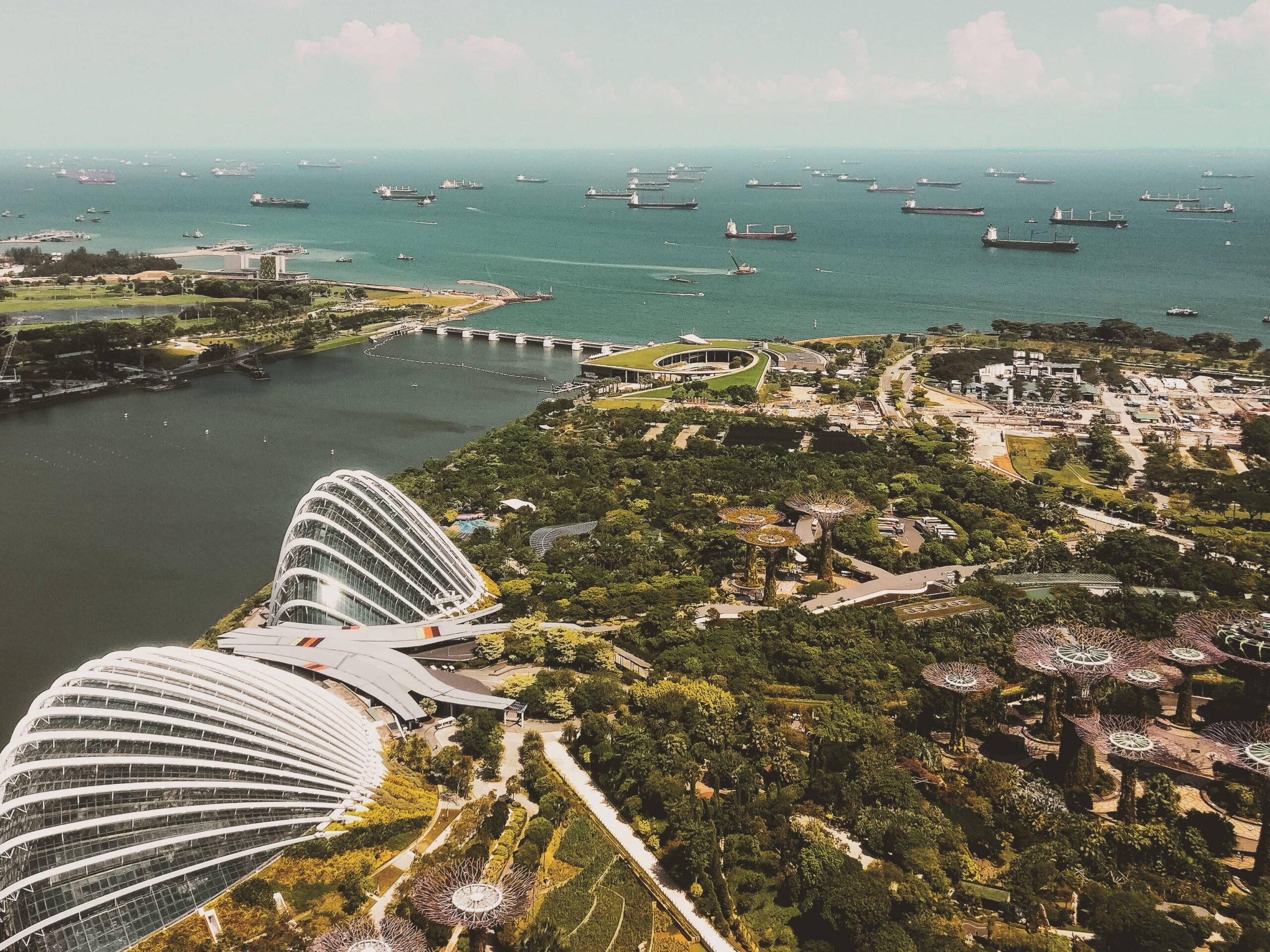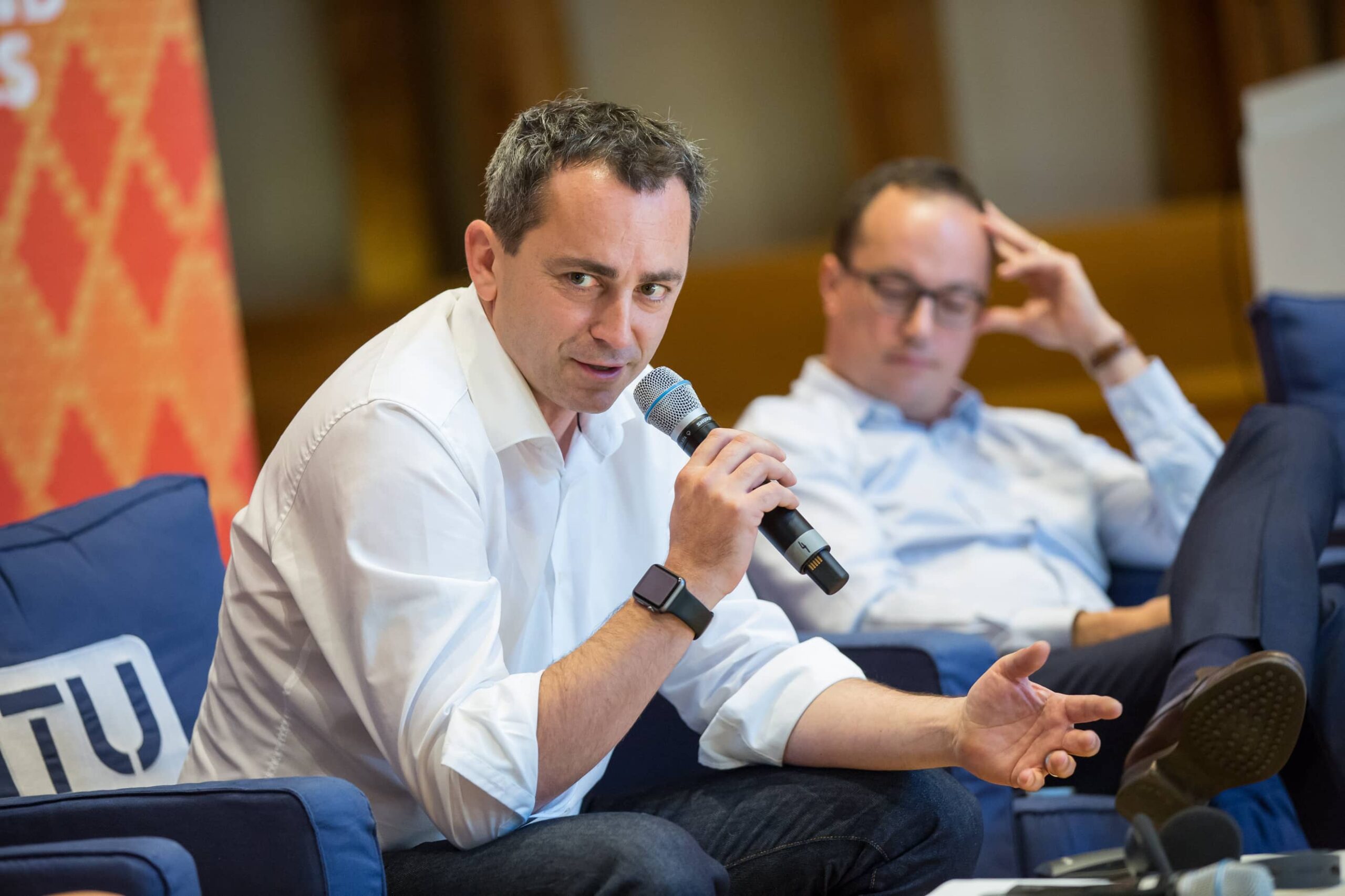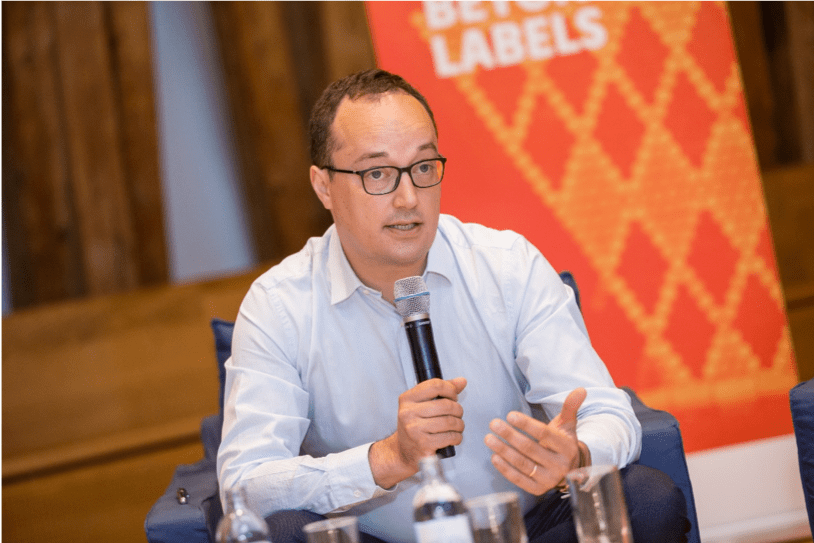

Living with urban traffic congestion: when digital makes us love bottlenecks
Why we continue to live with traffic jams: congestion, our collective choice
Only one city, Singapore, has put theory into practice by rolling out a broad panel of efforts to influence mobility supply and demand, thus demonstrating that it is indeed possible to solve the problem of traffic congestion.
Faced with the insufficient amount of available public space and the fact that roadways devoted to cars covered 12% of its surface area, the city-state carried out drastic actions aiming to reduce the number of cars in the city. These measures include requiring an expensive Certificate of Entitlement to own a personal car [1], implementing a quota on the number of private vehicles and, finally, instituting a citywide toll system in 1974 [2]. Each of these efforts aims to stall the rising number of vehicles on the city-state’s streets [3] and to improve traffic speed [4].
Singapore’s efforts have achieved noteworthy success. Despite its population of 5.5 million people, as well as a density (8,800 residents/km2) and area (719 km2) similar to Greater Paris, Singapore has managed to reduce the annual duration of traffic jams to 10 hours a year, or nearly seven times less than Paris (69 hours per year) [5]. The determining factor in Singapore’s success lies in its ability to take extreme measures to reduce traffic congestion [6].
The main barrier to success facing any strategy for reducing traffic jams is not technology: it’s policy. The extremely proactive – some might say authoritarian – measures put in place in Singapore seem difficult to envision in regions whose geography and political culture make such restrictive measures an unlikely sell.
What’s more: we have an ambiguous relationship with urban traffic congestion. Even though they place a burden on cities, traffic jams are also seen as the most obvious sign of a city’s appeal and strong economic health. Downs affirms as much when he sees traffic jams not as a failure of our mobility policies, but rather as a sign of a city’s good economic health.
This is the reason why, even though it is clearly one of the most effective ways to reduce traffic congestion, citywide tolls raise so many objections. Its detractors thus point out its potentially harmful impact on a city’s appeal. Such tolls can notably raise costs for travelers (unless their vehicle is exempt from tolls). This added cost also has a negative impact on the appeal of working inside the city’s toll zone [7]. In the long run, it could displace certain businesses outside of toll zones and, ultimately, reduce the city’s appeal. In the current context of stiff competition between urban areas, it is in no city’s interest to implement an urban toll system if its neighbors are not doing likewise.
In the context of these discussions on urban appeal, cities have a choice: either implement efficient solutions that may damage the city’s appeal, or maintain the status quo by balancing appeal and congestion. In reality, they have already decided. Urban congestion is in large part a choice. By allowing traffic jams to form, cities have employed one of the most efficient ways to reduce demand for car travel: through dissuasion. For Anthony Downs, congestion is an essential tool in combatting traffic jams. Without traffic jams, a roadway remains competitive. As soon as the network becomes congested, drivers have less incentive to travel on it.
The issue is, therefore, not to eliminate urban congestion, but to control it and use it as a regulation tool. This is the proper angle for understanding the role and potential of digital technology in this area. The challenge now consists in making digital a tool for improving the acceptability and control of traffic congestion. In this respect, recent discoveries in behavioral economics provide many apt lessons.
Digital to make congestion more acceptable
Urban congestion causes a needless and anxiety-inducing waste of time for citizens, who frequently list traffic jams as one of the main sources of stress. A survey conducted by Waze in October 2018 indicated that traffic jams represented the biggest cause of stress for 79% of Israeli drivers [8]. And yet, these episodes, as undesirable as they may be, are part of the everyday reality of mobility –and they are here to stay. So why do we continue to fuel traffic jams in the city? Behind this paradox lies a complex reality. In fact, even though drivers curse traffic jams on the micro level, they often procure a much greater utility from car travel than any other mode of transportation.
A variety of factors determine our choices. We can notably distinguish between the utility a user derives when planning their trip from the utility they perceive in the moment when driving their car. In traffic jams, stress is caused by the user’s feeling of losing control, since they are not moving as quickly as they would like and, as a result, their movement is constricted. The other determining factor of this stress is the unpredictability of traffic jams and the fact that they can occur at an inopportune moment [9]. In his study of the factors that prevent us from learning from poor choices, Norbert Schwartz indicates that drivers’ perception of traffic jams is often out of proportion to their actual lived experience [10]. Instead of learning from our actual experience with the torments of traffic, we dwell instead on how the trip should have gone in an optimal scenario, thus erasing the memory of congestion episodes.
Digital services also influence users’ perceptions of traffic jams, by enabling them to avoid bottlenecks (navigators) or turn driving time into free time (ridehailing). Moreover, by providing a real-time analysis of a trip before it starts (travel time and events), they help users stay better informed, avoid unwelcome surprises and limit the stress caused by eventualities like traffic congestion. For example, the survey conducted in 2017 by IPSOS and Boston Consulting Group (BCG) on “European Mobility” revealed that users believe that digital services can improve their travel experience. And for good reason, because digital technology has brought about services enabling them to stay better informed in real time. Though these features are not enough to solve urban congestion, they can still ease the stress and anxiety caused by trips made without adequate preparation or information, both in terms of duration and itinerary.
For lack of ways to cut down efficiently and sustainably on time wasted in traffic jams, digital players are expanding their approach. They now aim to make the time wasted in traffic jams more acceptable. Through a better understanding of uses, digital companies operating as mobility players understand the way users perceive their trips and the time spent in traffic jams. In turn, they use this knowledge to develop their service to make traffic less stressful [11]. In this vein, they offer features informing drivers of real-time traffic conditions. By receiving real-time traffic updates during a trip – taken by car, ridehailing service or public transit – digital services like route planners enable users to anticipate frustrating variables on their route (slowdown, accident, breakdown).
Though many view solving traffic jams as the major challenge facing cities today, it remains true that, in a majority of cases, drivers have already internalized the existence of traffic jams [12]. However, though people have internalized traffic as an inherent part of cities, they can only tolerate it up to a certain point [13]. Beyond the threshold of acceptability, traffic causes more stress and anxiety in drivers. And the reason they can accept it up to a certain point is that traffic is somewhat predictable. In this way, a necessary addendum to the acceptability of traffic is the importance road users attach to the predictability of traffic episodes and the reliability of traffic information. Already in 1976, the French Ministry of Transportation published a report indicating that users often care more about the unpredictable nature of their trips than their actual duration. In other words, users of mobility services value their ability to identify and prevent any eventual delays rather than simply calculating the trip duration [14].
Predictability was thus cited by the same report as a key factor in service quality alongside speed, comfort and regularity. Currently, traffic analyses provide a real-time vision of a situation, which shows users what they would have encountered were they already en route, instead of enabling them to predict what they will encounter on their actual trip. Traffic prediction takes this a step further. Since 2015, the Optimod’Lyon app offers reliable traffic prediction at a specific time by combining real-time and historic traffic data [15]. For the OECD, experiments like this constitute an important avenue for reducing the effects of bottlenecks on road users. In fact, thanks to traffic and bottleneck prediction, it is now possible to determine the likelihood of encountering these phenomena and organize trips accordingly.
This information, even if it offers traffic predictions, will have no impact on a user’s route if the user does not take it into account. When it comes to routine trips along which the driver is familiar with the traffic points, it remains unlikely that they will seek out this type of information. One of the major challenges facing digital mobility services will be to become more proactive by informing drivers of upcoming traffic conditions before their trips, so they can determine whether or not to travel at a different time or take an alternate route.
By working to make traffic more acceptable [16], digital players are pivoting away from their original promise to solve traffic jams. Now we are seeking to live with them. Is this a sign of resignation or a genuine inability to do otherwise? What power do algorithms and data have to solve this urban challenge? Considering the geographic and financial constraints that prevent them from altering physical infrastructure, is it not in the interest of public authorities to capitalize on these data which, if properly used and shared in the right conditions, can advance a broad strategy to reduce traffic? In other words, how can we start to think of digital not as an end but as a means of easing traffic?
Building comprehensive mobility services at the right scale
The digital revolution has reexamined the role and place of various mobility players in solving urban traffic problems. However, in spite of the massive changes brought on by digital’s entry into our transportation habits, it has not solved the issue of traffic. This question has therefore fallen to public authorities, which remain the dominant forces in managing transportation networks. How can public entities leverage digital technology to regain control over mobility?
Far from slogans like “Outsmarting traffic together” (Waze) and “Move the way you want” (Uber) [17], the new mobility players from the digital realm are now forming partnerships with other stakeholders in urban mobility (operators, municipalities, transit authorities, etc.) to share some of their data in order to solve urban challenges like traffic. Now, digital titans aim to work with cities to build smarter systems by interfacing public and private mobility data. Turning to these new data sources is neither unusual nor insignificant: with the right guarantees, this new information can enable municipalities to broaden their understanding of mobility at low cost [18]. In order to achieve the best results, such partnerships must take into account the evolution of mobility. These changes include an increasing number of players, modes of transport and, ultimately, data producers. This new situation fragments and complicates access to information. Similarly, the sprawling nature of transportation through time and space, regularly crossing administrative boundaries, neutralizes any action that does not consider traffic flows at an appropriate scale [19].
To date, digital titans point to two main types of successes: the possibility of implementing efficient and targeted efforts and developing a better understanding of the phenomenon. In Boston, Waze notably helped to improve traffic light synchronization at several intersections, thus reducing traffic congestion by nearly 18%. In London, during the Tower Bridge renovation, Uber’s data shed light on the domino effect caused by closures on traffic congestion throughout the network [20]. Though it may not lead to a general improvement in the situation, Marta Gonzáles, Associate Professor at UC Berkeley, indicates, by drawing a parallel with flows in other networks, that resolving the main traffic bottlenecks improves the operation of the entire system.
Provided to a central stakeholder in traffic regulation, personal mobility data may make it possible to develop high-quality, comprehensive mobility services [21] that transcend the silo mentality that has dominated the industry up to now. Integrating data collected by global platforms would provide precise information on automobile mobility. When interfaced with public transit data, this information would make it possible to offer efficient alternatives to drivers whenever possible.Cutting down on car use will not happen by decree [22]; on the other hand, it makes sense to prove to drivers that a more efficient solution in terms of time, cost and comfort is available.
These partnerships are both promising and inexpensive. As long as they set a clear framework for data sharing and use, they may represent a win-win exchange for mobility authorities, mobility service operators and users, who receive better service in exchange for their data. It now remains to be seen, on the one hand, if the platforms are ready to follow their own marketing slogans and put their skin in the game, and on the other hand, if we are ready to have the bold discussion we need about the price of mobility. Without it, these partnerships designed to benefit everyone will inevitably end up maintaining the same high level of traffic, if not making it even worse.
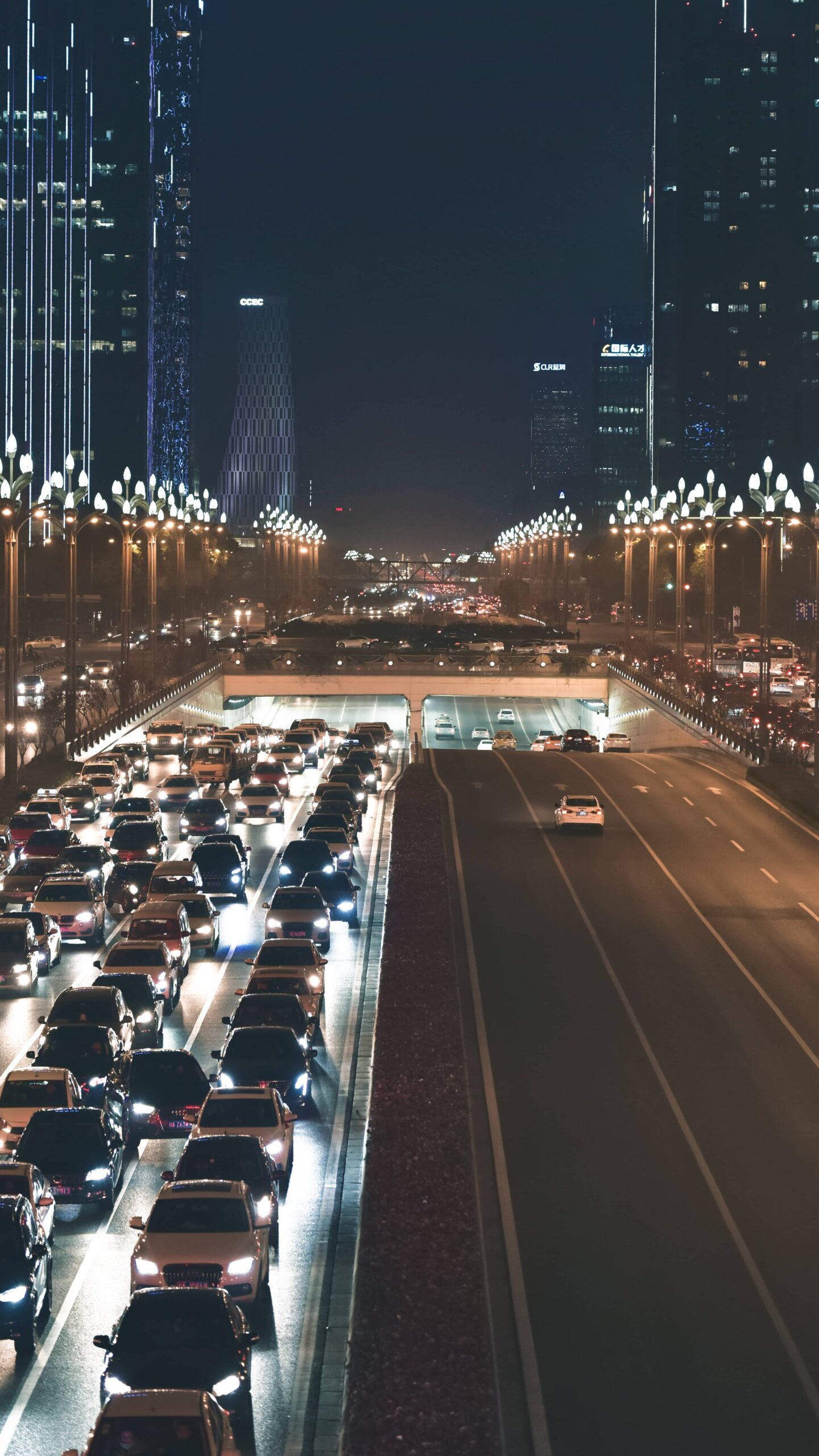
General conclusion
Before praising digital as the miracle solution to traffic jams in cities, we need to be sure about one thing: do cities actually want to do away with traffic?
Nothing is less certain. Though traffic congestion leads to the temporary and recurring gridlock of many vehicles along urban roadways, this phenomenon can be analyzed in two distinct ways. Viewed from the angle of urban transportation, bottlenecks illustrate the failure or inadequacy of mobility policies, as citizens waste several dozen hours – even over a hundred in extreme cases – sitting in traffic jams every year. But as Anthony Downs explains, traffic is also a direct indication of a city’s good economic health. For cities, though traffic jams are a source of frustration, they are also a sign of their appeal. This dual interpretation of traffic congestion makes its resolution even more complex: which side is right?
To date, a majority of cities prefer the status quo of their relative control over traffic, notably by using digital tools. Behind the promise of these tools to reduce traffic congestion, the reality persists: nothing seems able to stop the slow progression of traffic jams in the city, not even the smartest technologies. If solutions proven to reduce traffic jams in cities are available, why hasn’t the situation improved?
Easing traffic congestion cannot be reduced to digital technology alone. To resolve the current impasse in which cities have found themselves, and in which traffic congestion is the only winner, it behooves cities to move beyond the role of digital players in reducing traffic congestion and, as Anthony Downs invites us, investigate the most effective tool to date in cutting traffic congestion: taxing mobility. This mechanism takes on many different forms and methods. From internationalizing the externalities tied to using personal cars in urban areas to a complete overhaul of automobile taxes and fees, this fundamental avenue responds to a two-fold challenge: aligning taxation with today’s environmental and spatial challenges and updating taxation with current technologies (GPS, pay-per-use) for which digital represents a privileged platform.
However, faced with the polemic stirred up by mentioning or implementing such reforms, even when they offer an efficient response to one of the main sources of frustration in the city, the main lever to activate is not technology: it’s education.
This article is the last installment of a series of four episodes by La Fabrique de la Cité investigating the role of digital technologies in the resolution of cities’ congestion problem.
[1] Land Transport Authority, Certificate of Entitlement (COE), (Link: https://www.lta.gov.sg/content/ltaweb/en/roads-and-motoring/owning-a-vehicle/vehicle-quota-system/certificate-of-entitlement-coe.html) [Accessed on October 22, 2018].
[2] Land Transport Authority, Electronic Road Pricing (ERP). (Link: https://www.lta.gov.sg/content/ltaweb/en/roads-and-motoring/managing-traffic-and-congestion/electronic-road-pricing-erp.html) [Accessed on October 22, 2018].
[3] Eli Meixler, Singapore is Banning Additional Cars on Its Roads as the City-State Runs Out Of Space, Fortune, October 24, 2017. (Link: http://fortune.com/2017/10/23/singapore-vehicles-ban-land-scarcity/) [Accessed on October 22, 2018].
[4] Christopher Tan Senior, When ERP rates rise, traffic speed goes up too, say Josephine Teo, The Straits Times, September 10, 2014. (Link: https://www.straitstimes.com/singapore/transport/when-erp-rates-rise-traffic-speed-goes-up-too-says-josephine-teo) [Accessed on October 22, 2018].
[5] INRIX Global Traffic Scorecard. (Link: http://inrix.com/scorecard/) [Accessed on October 22, 2018].
[6] Timothy B. Lee, Singapore freezes private car ownership to fight congestion, Ars Technica, October 24, 2017. (Link: https://arstechnica.com/cars/2017/10/singapore-is-capping-the-number-of-private-cars/) [Accessed on October 22, 2018].
[7] Chuanli Liu, Zuduo Zheng, Public acceptance towards congestion charge: a case study of Brisbane, Social and Behavioral Sciences 96, 2013. (Link: https://core.ac.uk/download/pdf/81120021.pdf) [Accessed on October 22, 2018].
[8] Eytan Halon, Report: nearly 80% of Israeli drivers say traffic biggest cause of stress, The Jerusalem Post, 8 octobre 2018 [En ligne : https://www.jpost.com/Israel-News/Report-Nearly-80-percent-of-Israeli-drivers-say-traffic-biggest-cause-of-stress-568909] [Accessed on October 22, 2018].
[9] Dick Ettema et al., The road to happiness? Measuring satisfaction of Dutch car drivers with their travel using the satisfaction with travel scale (STS), Transport Policy 27, mai 2017.
[10] Norbert Schwartz, Jing Xu, Why don’t we learn from poor choices? The consistency of expectation, choice, and memory clouds the lessons of experience, Journal of Consumer Psychology 21, 142–145, 2011.
[11] Rich Parr, How Would You Describe Your Emotional State When Stuck in Boston Traffic? Here’s What You Said, WBUR, April 29, 2016. (Link: http://www.wbur.org/bostonomix/2016/04/29/boston-driver-reaction-words) [Accessed on October 22, 2018].
[12] Eric A. Morris, Jana A. Hirsch, Does rush hour see a rush of emotions? Driver mood in conditions likely to exhibit congestion, Travel Behaviour and Society, Volume 5, September 2016, p. 5-13.
[13] European Conference of Ministers of Transport (ECMT), Managing Urban Traffic Congestion, OECD Publishing, 2007. (Link: https://www.itf-oecd.org/sites/default/files/docs/07congestion.pdf) [Accessed on October 22, 2018].
[14] Ministère des transports, Comité des Inspections générales, Qualité du service transport et rôle de l’État, 1976. (Link: http://temis.documentation.developpement-durable.gouv.fr/docs/Temis/0033/Temis-0033633/5867.pdf) [Accessed on October 22, 2018].
[15] Robert Viennet, Optimod’Lyon : la première appli de mobilité multimode en temps réel et prédictive,Mobilicités, May 27, 2015. (Link: http://www.mobilicites.com/011-3782-Optimod-Lyon-la-premiere-appli-de-mobilite-multimode-temps-reel-et-predictif.html) [Accessed on October 22, 2018].
[16] K. G. Orphanides, Your selfish driving is making urban congestion worse,Wired, March 17, 2016. (Link: https://www.wired.co.uk/article/selfish-driving-urban-congestion-socially-aware-gps] [Accessed on October 22, 2018].
[17] Slogans des services proposés par Waze et Uber.
[18] Noah Stern, How governments are partnering with Waze to share data and reduce traffic,Data-Smart City Solutions, February 11, 2016. (Link: https://datasmart.ash.harvard.edu/news/article/wazes-drive-towards-successful-public-partnerships-786) [Accessed on October 22, 2018].
[19] Frédéric Audard, Modélisation de la mobilité : La génération de trafic à l’échelle régionale, Université de Franche-Comté, December 8, 2006.
[20] Uber Movement Team, Examining the impact of the London Tower Bridge Closure, Medium, March 15, 2018. (Link: https://medium.com/uber-movement/examining-the-impact-of-the-london-tower-bridge-closure-5b7626e44915?lang=fr-FR) [Accessed on October 22, 2018].
[21] Jean Coldefy, Numérique et mobilité : impacts et synergies, Fondation pour l’innovation politique, April, 2015.
[22] ibid.
These other publications may also be of interest to you:

Lisbon beyond the Tagus
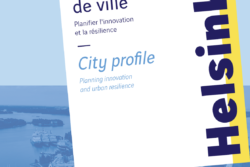
Helsinki : Planning innovation and urban resilience
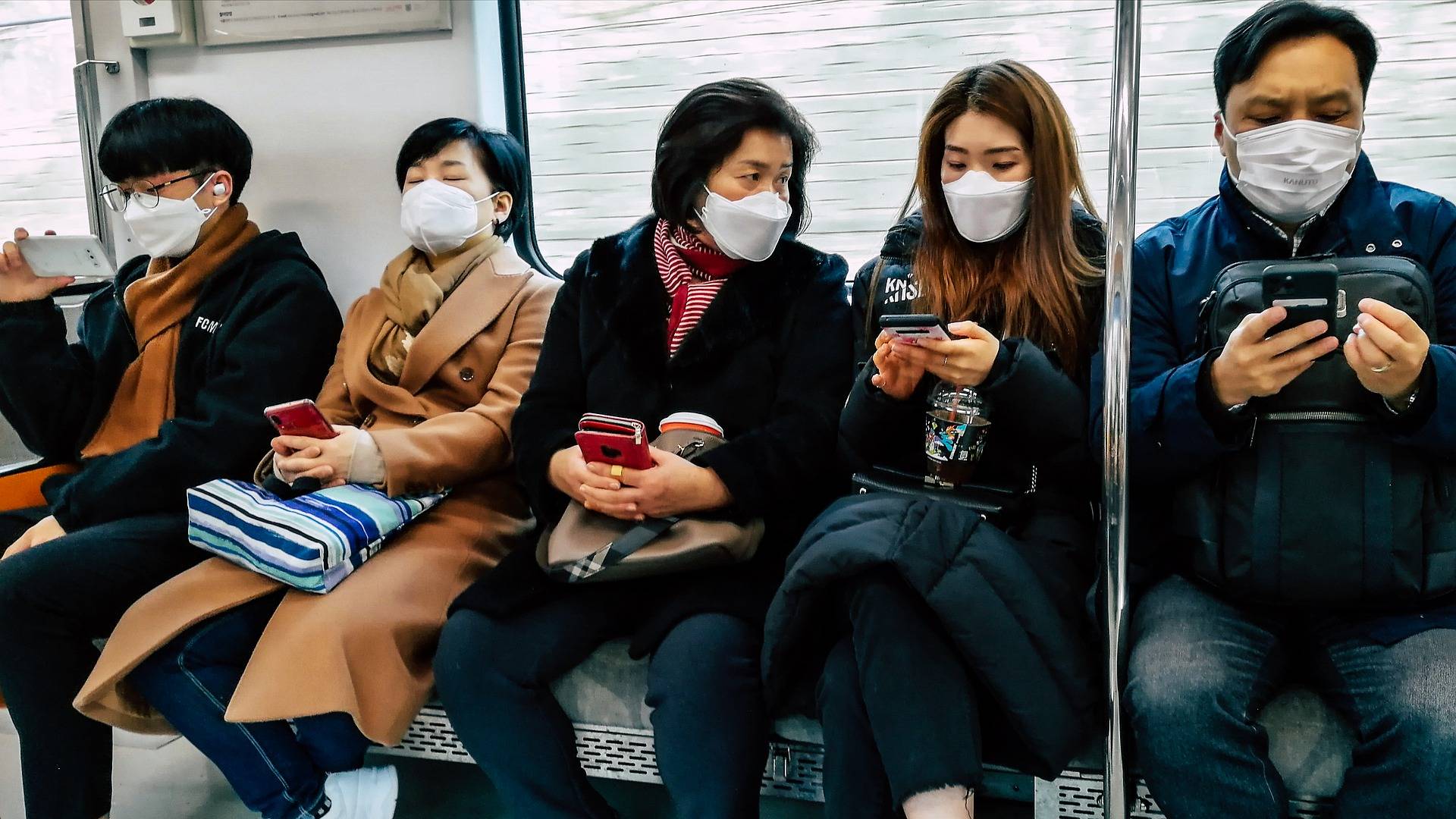
Sending out an SOS

Behind the words: telecommuting
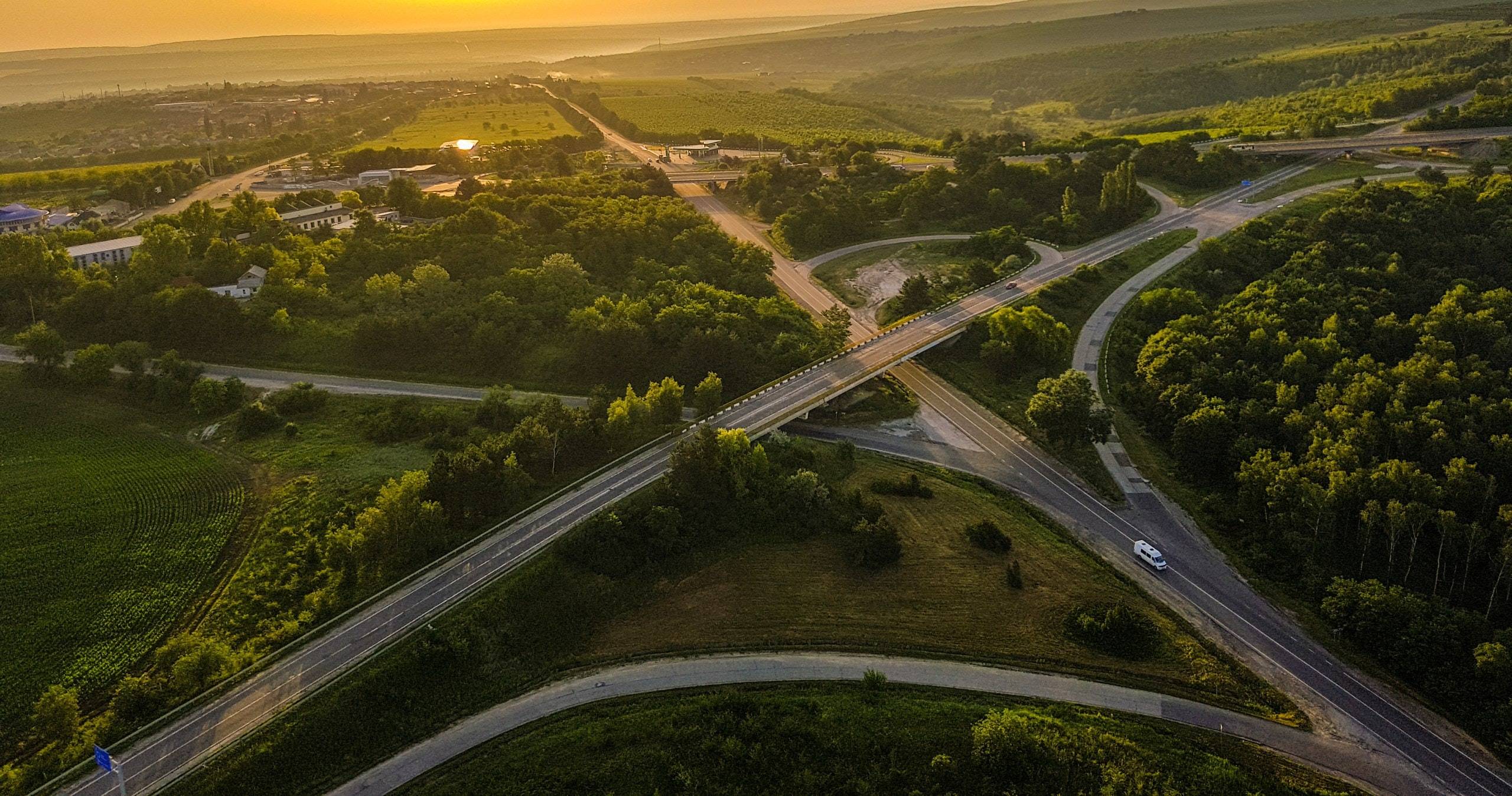
Behind the words: urban congestion

Toronto: How far can the city go?
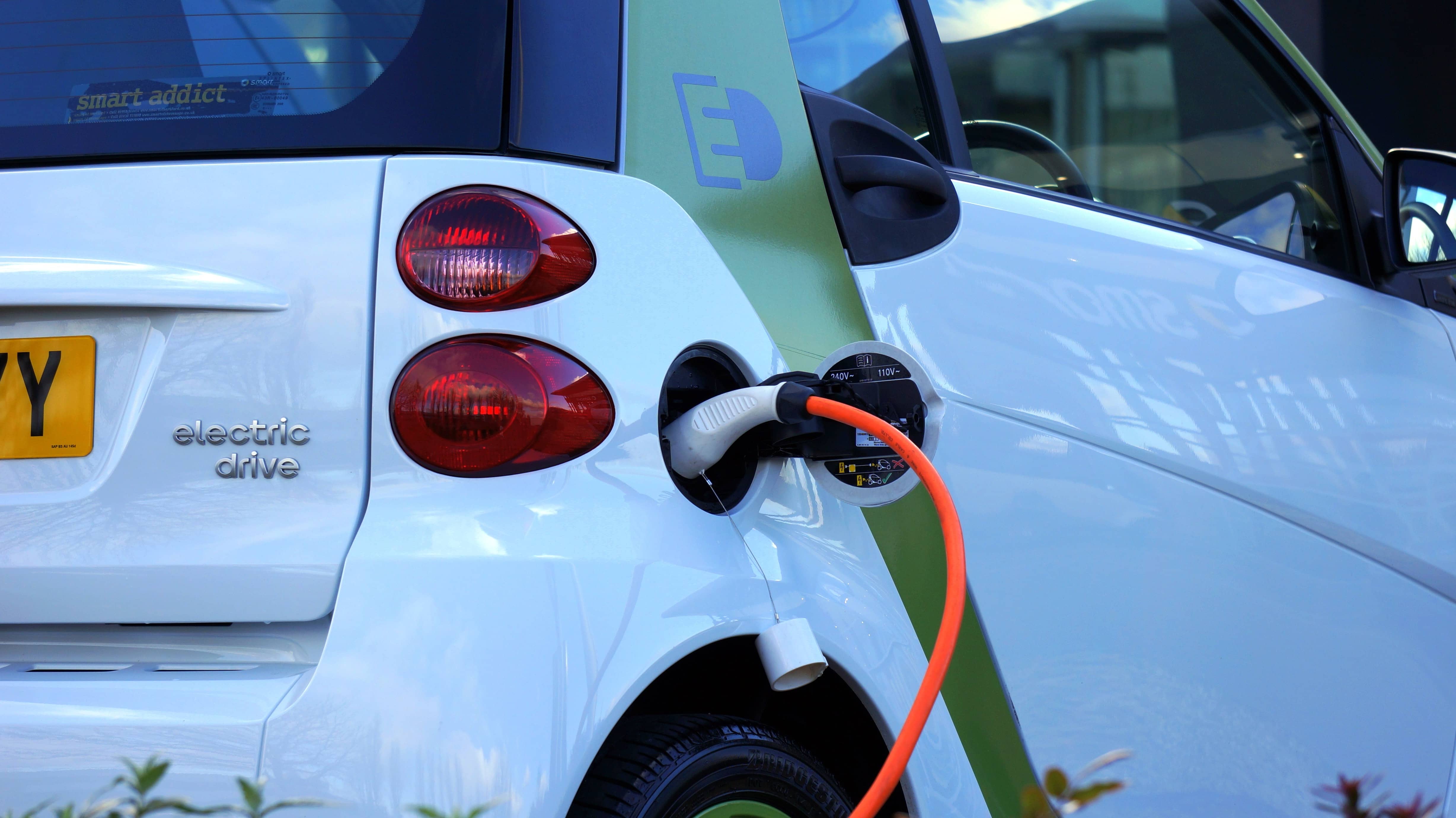
The political and technological challenges of future mobilities

Inventing the future of urban highways
La Fabrique de la Cité
La Fabrique de la Cité is a think tank dedicated to urban foresight, created by the VINCI group, its sponsor, in 2010. La Fabrique de la Cité acts as a forum where urban stakeholders, whether French or international, collaborate to bring forth new ways of building and rebuilding cities.















